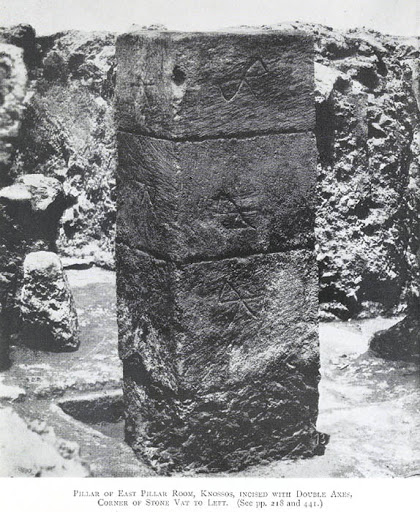
by Moe | Feb 16, 2020 | Freemasonry, Latest Media
“A great master of his craft, Ervin von Steinbach; but not he alone, For many generations labored with him, Children that came to see these saints in stone, As day by day out of the blocks they rose, Grew old and died, and still the work went on, And on and on and is not yet completed.” Henry Longfellow
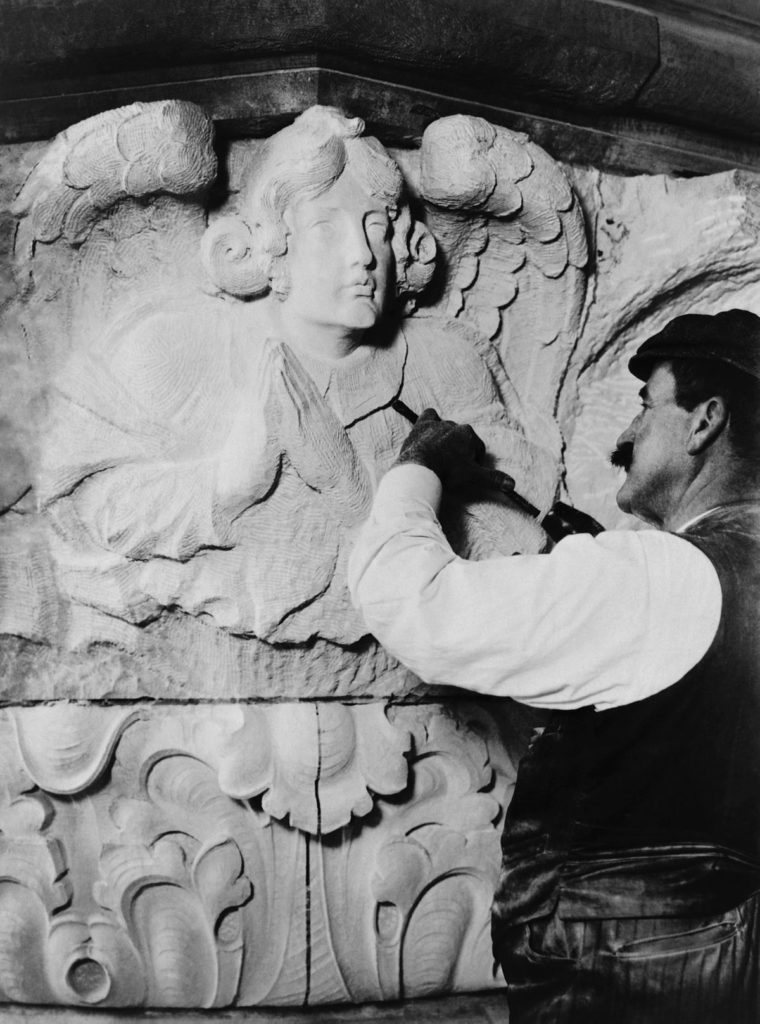
All over the world you will find that many ancient peoples had tried to communicate and document their worlds permanently etching and carving their history into the immortal stones of the landscapes they had inhabited. It was as if they were leavig these marks as testaments of their will to serve God and to create a kingdom of heaven on earth for us, their descendants.
Over time, various cultures such as the Ancient Egyptians had developed their own methods of documenting their lives, laws, and histories in the form of magical writing known only to them called hieroglyphs. This style became the precursor to ideographs and a more magical type of writing that only the initiated could read and understand with the Phoenician/Hebrew alphabet and soon thereafter the Greek, Latin, and English writing systems were created.
Since the most ancient times, it was the stonemasons who had developed a symbolical system of immortally marking their work in stone as a means for both identification of the tribe and or craftsman, communication, and also the identification of their Masonic guild. The oldest sets of symbols to come out of this Freemasonic system which has remained virtually unchanged for thousands of years and can be found all over the world are known as “Mason Marks.”
It is from these Masons and the Marks they left behind that I contend that we derive the modern-day Masonic Lodge, corporation, and also the corporate logo. I will detail these facts in another future essay.
In order to research who were the first people to incorporate these Mason Marks and document this history, it is important that we search back in time to locate the first people and or Tribe who may have developed and contributed to their distribution all over the world.
What I have discovered is that this Masonic symbology had originated on the Ancient Holy Island of Crete who along with the Greek Athenians I contend were the true progenitors of the Ancient Charges of Operative Freemasons. Masons such as one of the first immortal Masons, Daedelus of Crete who I had written about previously in my essay, “Hiram’s First Masons: The Cunning Daedalus Invented the Masonic Working Tools.”
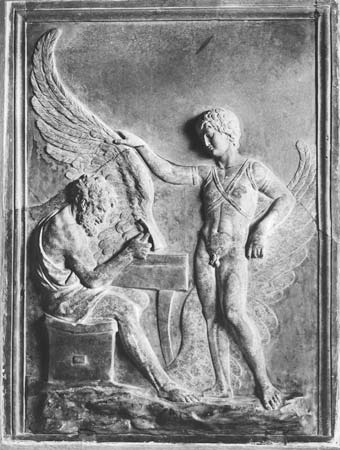
The Great Work of Daedelus has been known for well over 2,000 years as being credited with inventing the Masonic Working Tools used in the various degrees of Masonry such as the plumb-line and the axe, most of the tools used in carpentry, and of glue and he is also known as world-famous Cretan Labyrinth, according to the statements of Diodorus Siculus and Pliny. Homer had said that the statue of the daughter of Minos, King of Crete, Ariadne at Knossos was made by Daedalus.
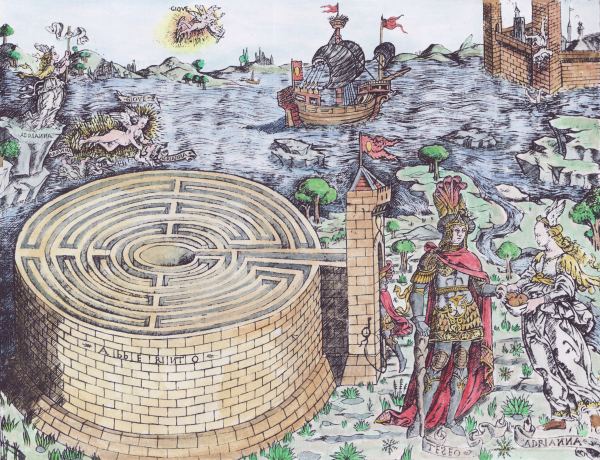
33rd Degree Freemason, Albert Mackey had said the genealogy of Daedelus was from the old Athenian race of kings. Mackey had written in An Encyclopedia of Freemasonry and Its Kindred Sciences;
“A famous artist and mechanician, whose genealogy is traced in the Greek myths as having sprung from the old Athenian race of kings, the Erechtheidae. He is said to have executed the Cretan labyrinth, the reservoir near Megaris in Sicily, the Temple of Apollo at Capua, and the celebrated altar sculptured with lions on the Libyan coast.
He is said to be the inventor of a number of the “Working Tools” used in the various degrees of Masonry such as the compasses and square, the plumb-line and the axe, most of the tools used in carpentry, and of glue. Of him is told the fable of his flying safely over the AEgean by means of wings made by himself. His nephew, Perdix, is the reputed inventor of the third Great Light in Masonry, the Compasses, which are dedicated to the Craft. (page 945)”
In studying this history and the Athenian Kings who Daedelus had descended, I have found that a city of Crete once anciently called Tenos, which was sacred to Poseidon, and now The Holy Village of Ayios Nikolaos (Saint Nicholas) was a political community said to be created by King Theseus who is documented as the founder-king of Athens.
Before I get into the mythology, I wanted to share a little archaeology with you showing the evidence of these first Freemasons with a coin dated from Olous, Crete dated circa 300-270 BC showing the head of Artemis Britomartis and on the reverse is a Masonic square. The coins that have been unearthed here are known as the “Coins of Olous” this coin with a Freemasonic Square with what looks like the letter G in the middle which is the oldest representation of Masonry on a coin that I could find anywhere.
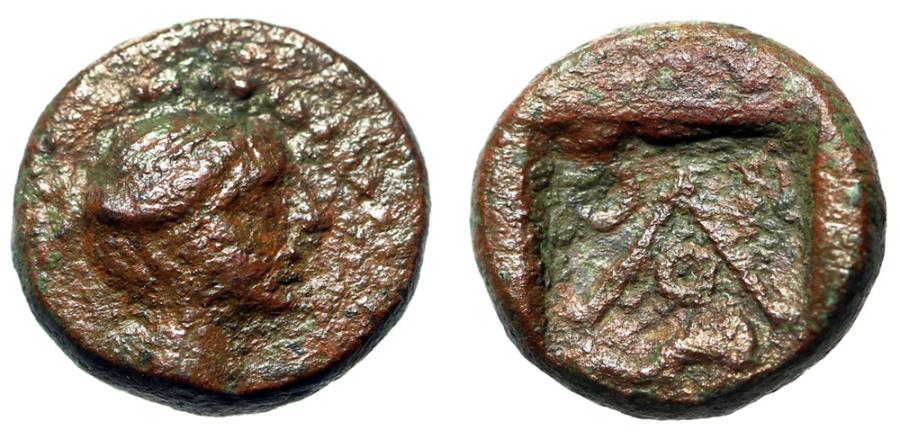
The mythology around this area of the island and King Thesus tells us that he was rescued from the Labyrinth by the Cretan King Minos’ daughter Ariadne and for her Great Work, she was given the Crown that was legally called Gnosis Corona, and she has officially surnamed Gnosis, from the City of the Goddess in Crete – Knossos.
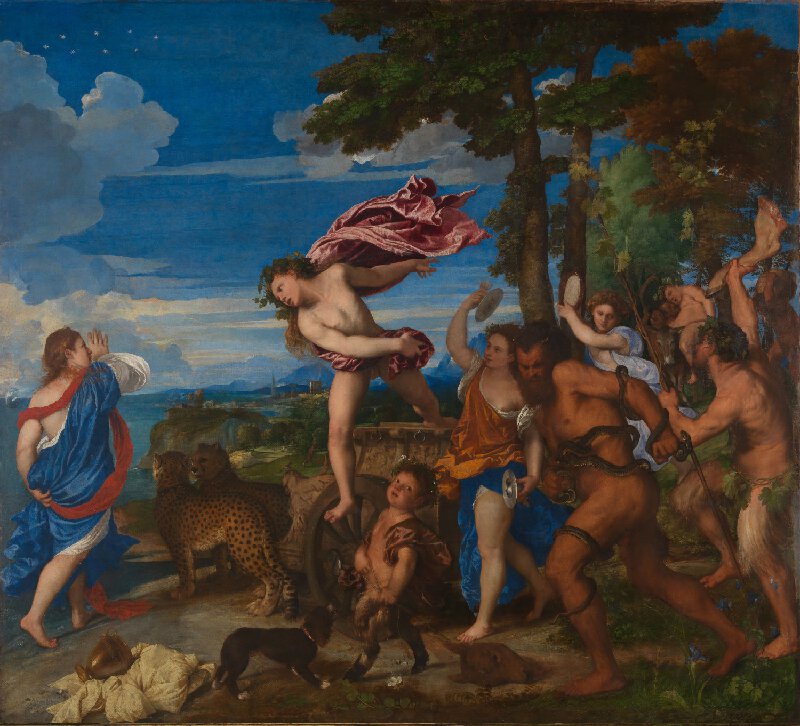
To corroborate Mackey’s claims about Daedelus’ relation to royalty with actual archeological science, you will find a divine place on Crete that was once known as “The Plateau of St Nicholas” and is more commonly called “The Plateau of Isopata”. It is from this location where you will obtain a most spectacular “royal view” of the city of Knossos and the Harbor below and also the Royal Tomb of Isopata that is said to date back approximately 3,500 hundred years and also where the famous 3,500-year-old sarcophagus of Hagia Triada was discovered.
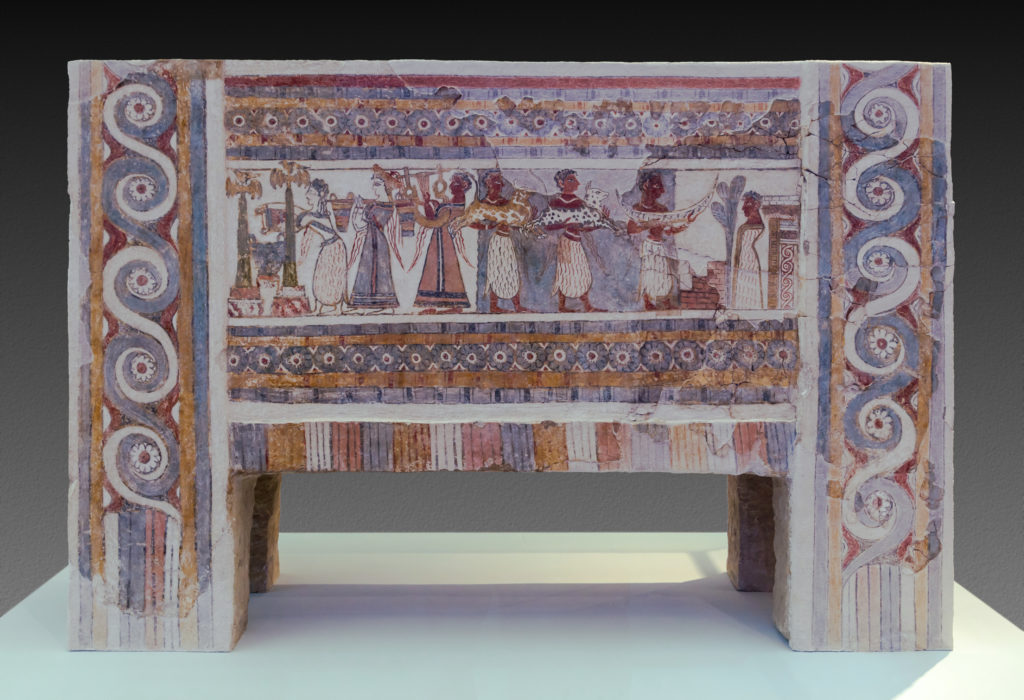
The symbols, Mason Marks, divine biblical history and the importance of Crete and Athens to true Masons are a testament to these facts spanning 3,000 years to in the building of the new world and in bringing wisdom to the world in an attempt to civilize of humankind.
For example, the symbols of these Masons have been found all over Crete in the Minoan palaces at Knossos, Malia, and Phaestos, which were listed and enumerated by author S. Hood in his publication, “Mason’s Marks in the Palaces,” in “The Function of the Minoan Palaces: Proceedings of the Fourth International Symposium at the Swedish Institute in Athens, 10-16 June 1984).
Searching the internet for more information, I discovered there were more than 220 mason’s marks at Phaistos mostly connected to the First Palace that was reported by Luigi Pernier in 1935 and Hood in 1987, who reported 750 mason marks at Knossos and 130 at Mallia that were dated to 1900-1700 BC. making them the oldest that I could locate anywhere in the world.
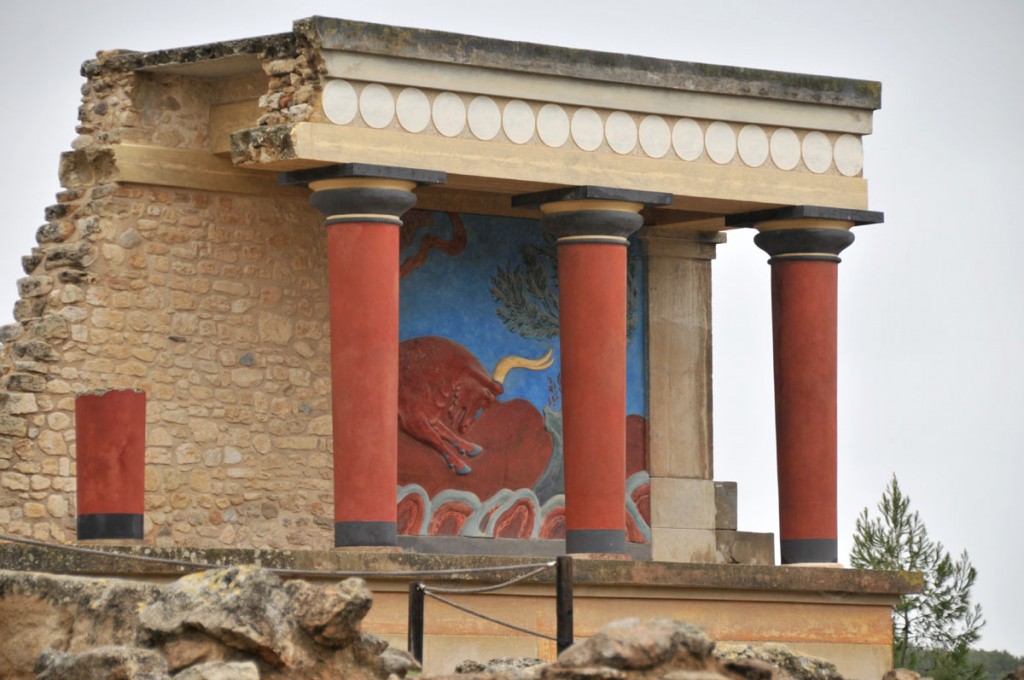
These are the main Mason Marks and symbols found all throughout the palaces of Knossos, Phaistos, and Mallia found in the book, Cretan Pictographs and Prae-Phoenician Script which the meaning were largely unknown at the time of this book.
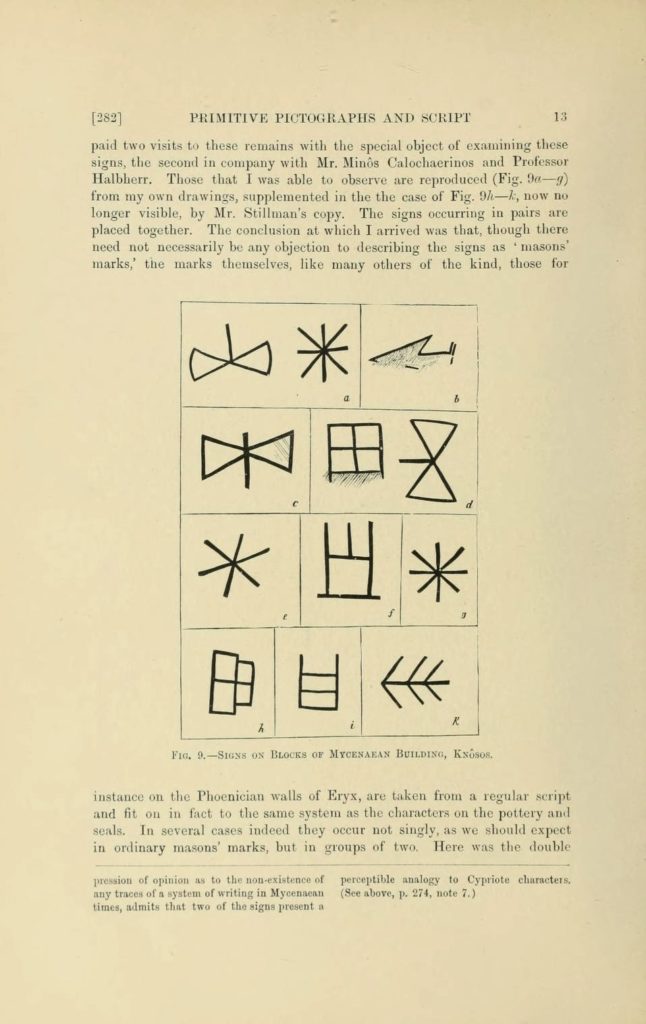
The meanings of the symbols in Cretan Pictographs and Prae-Phoenician Script are largely unknown or were at the time of this book.
Here is a later interpretation of the meaning of the symbols (S. Hood Oxford, 1994).
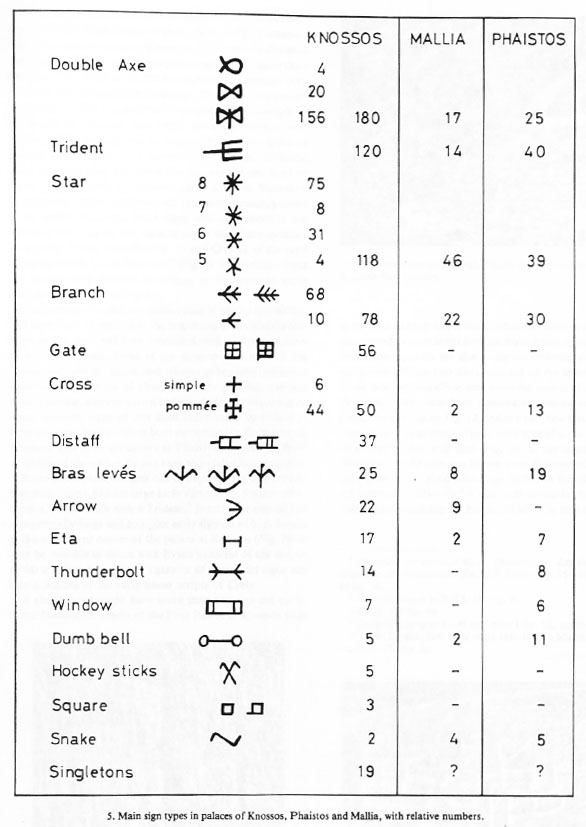
The oldest and most important symbols used by these Masons you will find are used all over the globe in almost all their building projects such as the Doubled Headed Axe of the Goddess Cult;
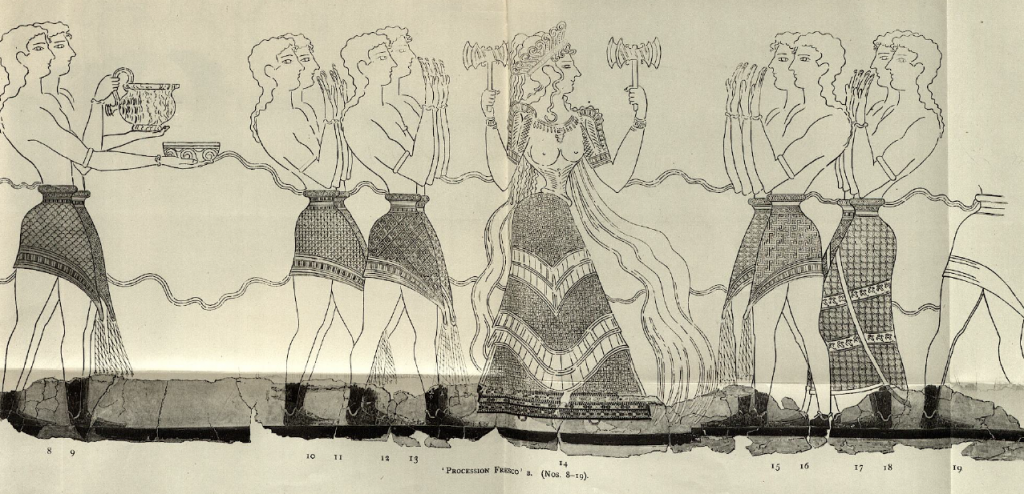
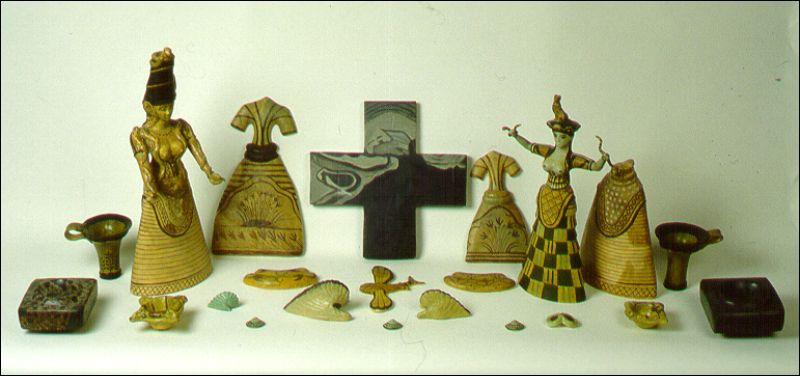
8 Pointed Star of Jupiter, Cross of Jerusalem, and the Swastika to name a few plus various other symbols and derivates thereof carved onto the pillars at Knossos.

“Incised signs on base blocks of Early Palace walls, Knossos” (Evans 1921)
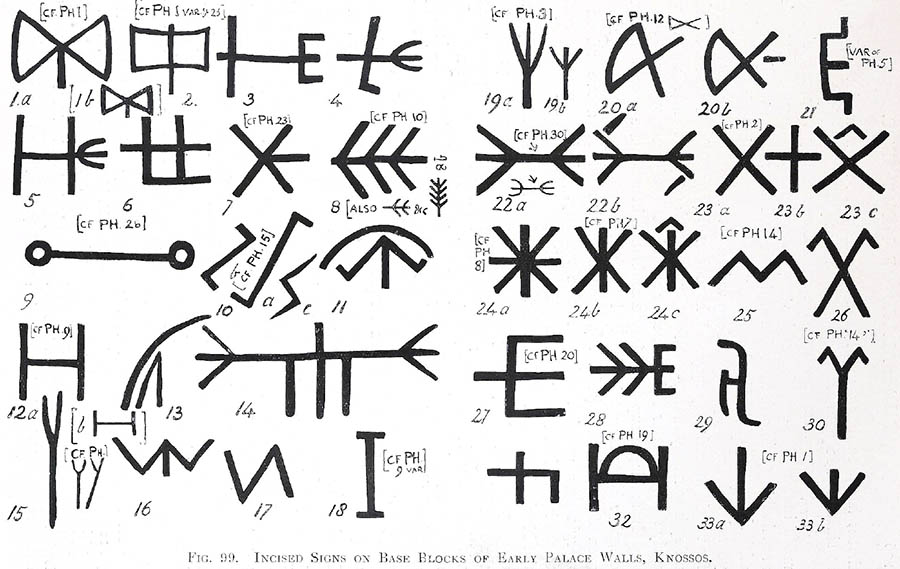
Here is the beautiful stonework that can be found in the west court of the Phaistos Palace mason’s marks found in the book of Luigi Pernier (Pernier 1935)
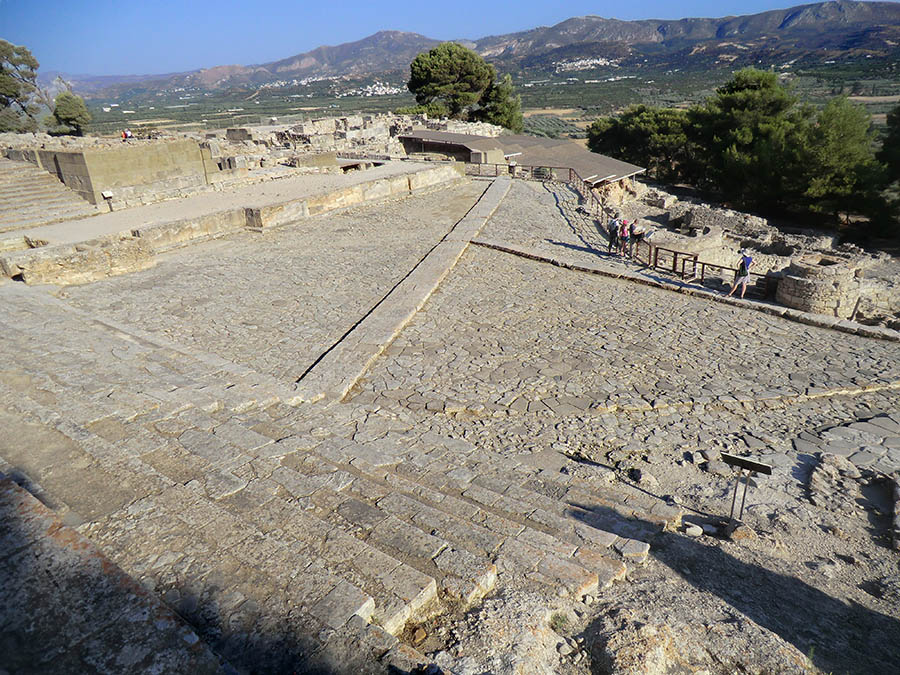
In the museum at Malia, there have on display some of these ancient Mason Marks that were found there and at the other palaces on Crete.
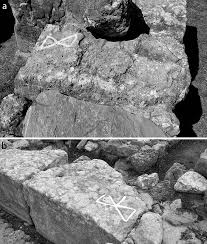
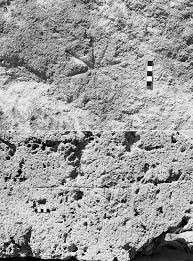
These same Mason Marks first created on Crete can be found in many important stone buildings and Christian Cathedrals all throughout the world such as Melrose Abbey.

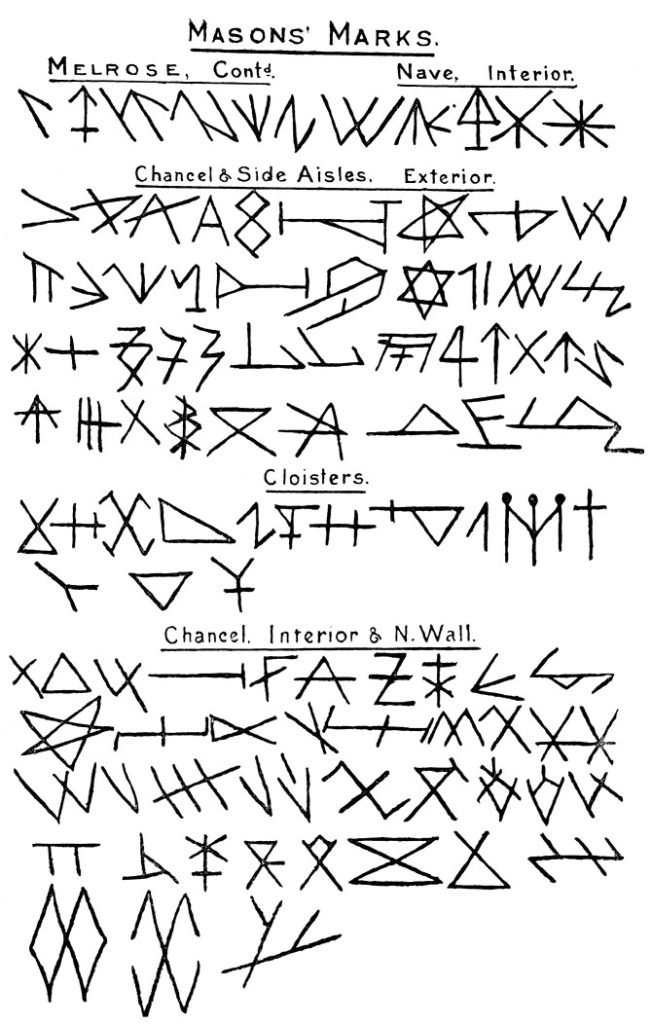
Places like Culross Abbey in Culross, Scotland
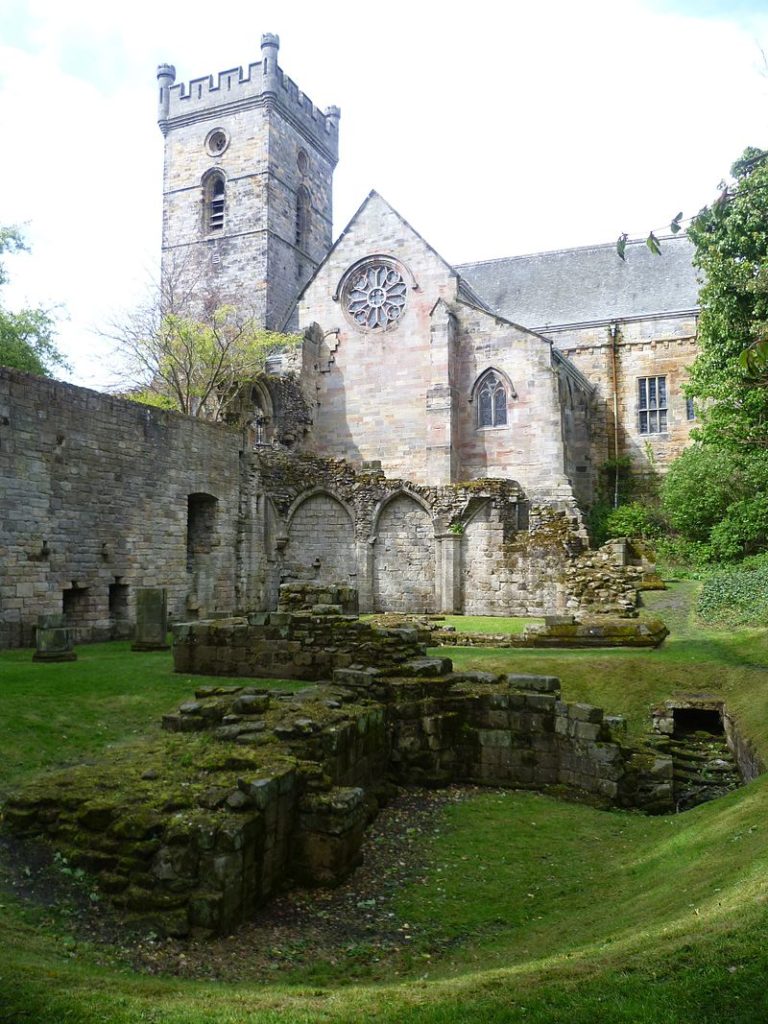
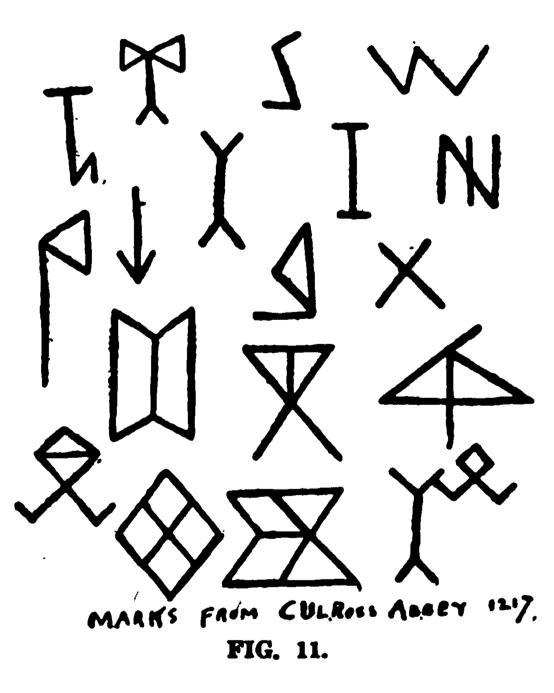
The Mediaeval Masons’ Marks that can be found all over the sone building structure in Herefordshire like the Templar Church of Garway also known as St Michael’s Church in the Herefordshire village of Garway
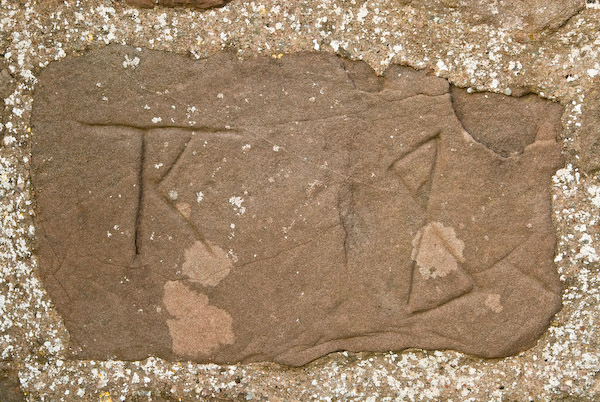
Medieval mason’s marks
Here is a list of all the Mediaeval Masons’ Marks found in Herefordshire
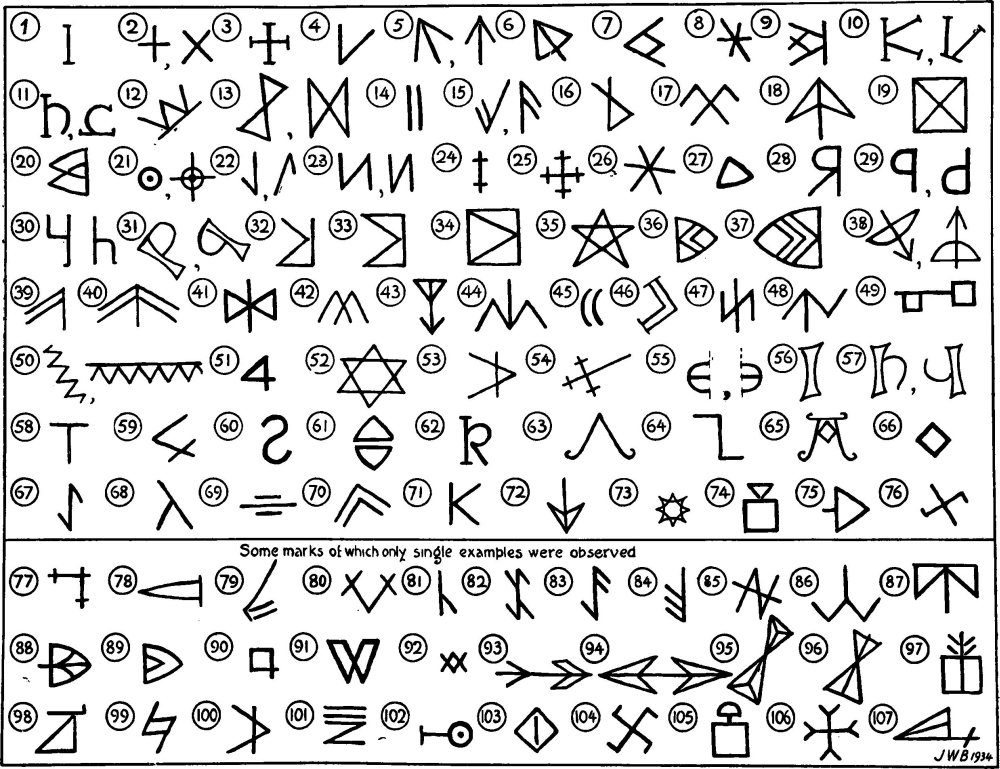
King Richard’s Tower, Nottingham Castle
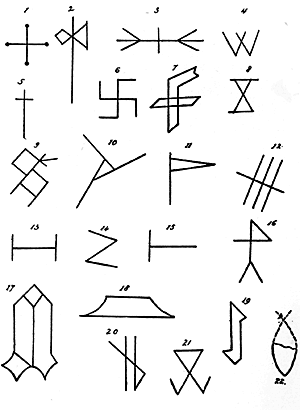
Durham Cathedral
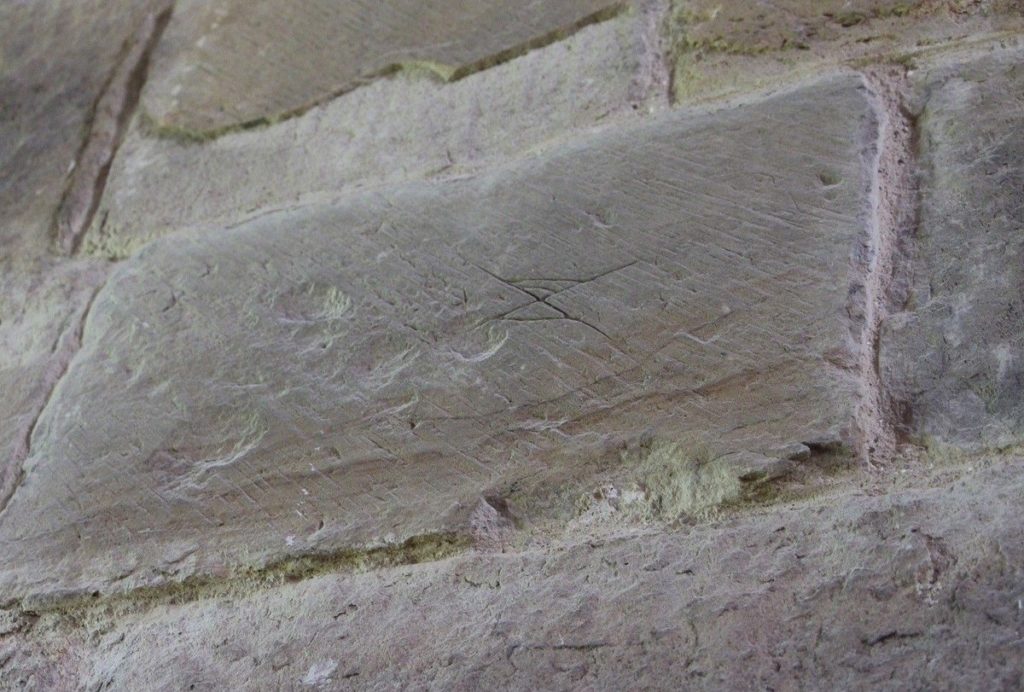
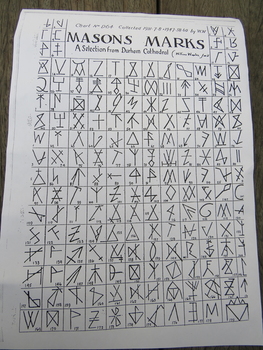
Interestingly as time would move forward, the Mason Marks of particular Freemasons that reside mainly in France, and Germany by the Cathedrals that the German Princes had built in which they had refined these symbols down to what appears to be a few core symbols being that of the Cross of Jerusalem, Star of Jupiter, Tau Cross, and the Russian Cross, as a secret inheritance to these Rites of their Greco-Roman Masonic Building Ancestors.
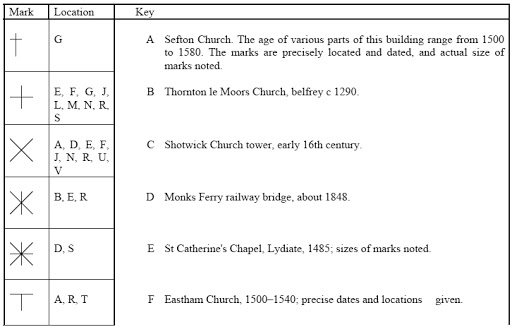
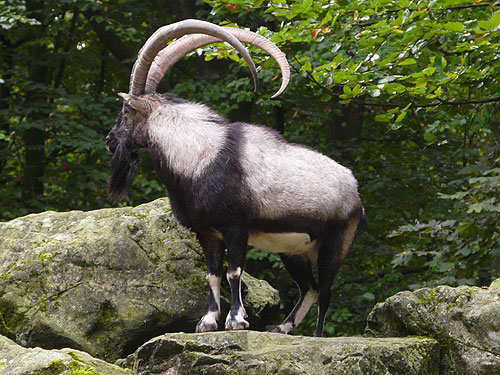
by Moe | Oct 20, 2019 | History of the Brotherhood, Latest Media
Since ancient times, the He-Goat has been used as a symbol of the Mac-a-dan-oian Empire and has always been associated with the wealth of the people of Bible lands.
The particular He Goat that I speak of is one of the most unique and rare wild animals on earth and can mainly be found only where the Ancient Gnostics had lived. It is a native of the Holy Island of Crete and Egypt where it can be found in Sinai and in the wilderness on both sides of the Dead Sea and the Syrian Desert of Arabia.
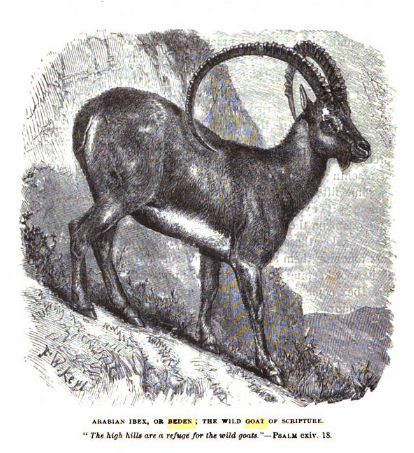
In the Scripture, they are spoken of as wild goats of the rocks who today are known under several names such as the Beden (Baedan, Baden – meaning Son of Dan), and the Cretan Goat (Capra Nubiana) or Abyssinian Ibex. Sometimes called also the Jaela by the Arabs, the Nubian Wild Goat, the Wild Goat of Sinai, and the ‘goats of Moses’. Its scientific name is Capra Beden (Capra Nubiana).
I simply like to call them the “Be-Dan Goats” and they were one of the main and prized animals of the Biblical patriarchs of the East. In fact, it became one of their main symbols for the life and wealth it brought them.
These particular goats had hair when properly taken care of was almost equal in the beauty that of silk, and is never sheared, but combed off. For example, the Levite Moses had used Goat’s hair in making the curtains of the tabernacle, Exod. xxv.
The women would spin the hair that was then worked and dyed which became one of their main exports for global commercial trade. It was said that they attributed the quality of the hair to the soil of the country.
Goats were tended with the sheep by the same shepherd (Gen. xxvii. 9; xxx. 32), but in separate companies (Mat. xxv. 32). Their hair was woven into cloth (Ex. xxv. 4; xxxv. 26), the flesh and milk were used for food (Lev. vii. 23; Dent. xiv. 4; Prov. xxvii. 27), and in extremity their hairy skin served as clothing (Heb. xi. 37).
Their flesh is said to taste excellent and compared to nearly the same flavor as that of the deer. The Bedouins use their skins to make water-bags of their skins, and on their thumbs wear rings made of Bedan horns.
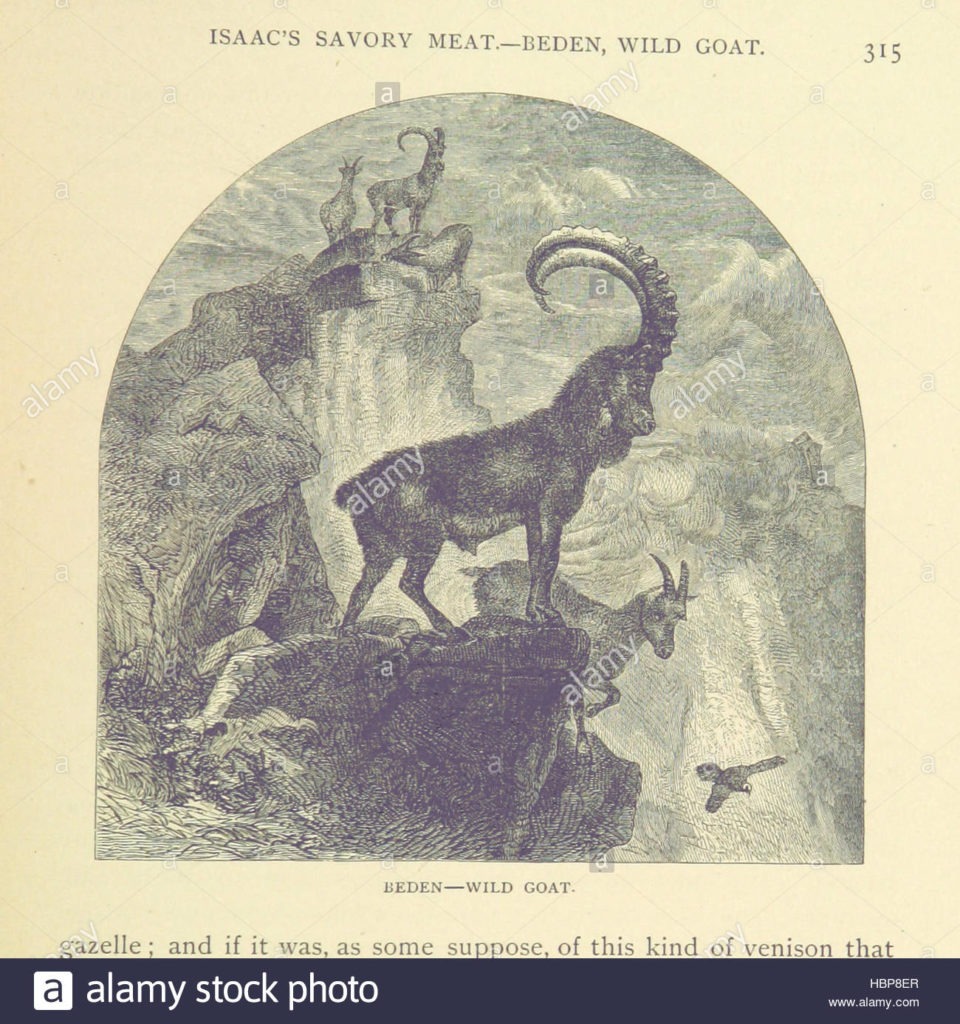
[The Land and the Book; or, Biblical illustrations drawn from the manners and customs, the scenes and scenery, of the Holy Land.] Image taken from page 387 of ‘[The Land and the
THE BEDAN OF THE BIBLICAL PATRIARCHS
The Bedan Goat is first seen in 1 Sam. xxiv. 2, in which it is rendered as “Wild Goats.” “It was told Saul, saying, Behold, David is in the wilderness of En-gedi [i.e. the Fountain of the Goat]. Then Saul took three thousand chosen men out of all Israel, and went to seek David and his men upon the rocks of the wild goats (azelim).”
In a past article, I connect King Saul with the Biblical prophet named Obed or Obediah and in ancient Hebrew (Phonecian) history as King Abibalus of Bediah and Bedan and in Masonic lore has Hiram Abiff. This name Bedan for Saul, meaning Son of Dan also seems to align with the naming of their special Bedan Goats.
Symbolically, we find that it was used as a symbol for the Maccedocians and the he-goat signifies the “chief ones” (Isa 14 9; cf Jer 60 8). In Prov 30 31, one of the four things “which are stately in going” is the he-goat, tayish (Arab. (j**-u, tais, “he-goat”), and is also mentioned in Gen 30 35; 32 14
In Daniel, the powerful king out of the West is symbolized as a goat with a single horn (8 5) and one of the older goats is the leader of the flock. In Isa 14:9 we are told of the downfall of the King of Babylon;
“Sheol beneath is eager to meet you upon your arrival. It stirs the spirits of the dead to greet you— all the rulers of the earth. It makes all the kings of the nations rise from their thrones.”
The “chief ones” are, literally, the he-goats, or “bell-wethers” of the flock (Isaiah 34:6; Zechariah 10:3), of which Hades is the shepherd (Psalm 49:14).and in Jerome 60 8, we learn, “Go forth out of the land of the Chaldeans, and be as the he-goats before the flocks.”
Jacob gave two hundred she-goats and twenty he-goats to Esau (Gn 32″). Nabal had a thousand goats (1 S 25″). Sheep and goats were kept together in flocks (Mt 258S-88). Kids especially were used as food (Gn 27′, Jg 6″> 13″, Lk 15»). among the possessions of Laban and Jacob, and in 2 Ch 17 11 among the animals given as tribute by the Arabians to Jehoshaphat.
These same goats are found in Job xxxix. 1: “Knowest thou the time when the wild goats of the rock bring forth?” And in Ps. civ. 18: “The high hills are a refuge for the wild goats.”
The goat which is sent into the wilderness bearing the sins of the people is sa’lr (Lev 16 7-22). The same name is used of devils (Lev 17 7; 2 Ch 11 15, RV “he-goats”) and of satyrs (Isa 13 21; 34 14, RVm “he-goats,” ARV “wild goats”).
DESCRIPTION OF THE BEDAN GOAT
The Bedan goats are a handsome animal with very long horns set closely on the forehead.
The males are a brown color with a black streak along the spine and the beard is very short, and a long mane hangs from the throat as far as the breast. The females are a greyish-brown, with white and black legs, and her face is very like that of the blessbok, being white, with a black patch and stripe in the middle.
They are one of the most agile animals on earth loving the highest and most craggy parts of the mountain ridge. They have the ability to dash at the face of a perpendicular precipice that looks as smooth as a brick wall, for the purpose of reaching a tiny ledge.
The young Bedan goats are sometimes captured and tamed but are said to be very difficult to rear to maturity.
The horns of the Bedan reach an enormous size and are curved with the large rings and ridges which cover their front which make beautiful handles for knives used by the Hebrews, Bedouins and even said to be occasionally seen in England serving as handles to carving-knives and forks.
CONCLUSION

I believe they chose these goats because they were one of the only animals that could live and thrive in these harsh desert and mountain environments which provided these families with the sustenance that they needed to also survive in such inhospitable places.
Places that were strategically chosen by the Biblical patriarchs for their home bases that acted as necessary defensive and offensive encampments so they could carry out their military plans. In addition the habits of the Bedan such as being very shy and wary, keeping to the mountains, and are very difficult to be seen because their color, are some ideas they used for their military efforts.
Over time, their descendants would honor these animals that helped them survive by using the He Goat and its horns as both a symbol of honor and royalty for their Tribes.
These same Tribes who had intimate knowledge of raising and herding these animals would then export these goats to other lands they had conquered like in Germany and Sweden where you will find their Eastern Bedan Cousins called the “steinbock, chamois, or bouquetin” in the Swiss and Tyrol Alps.
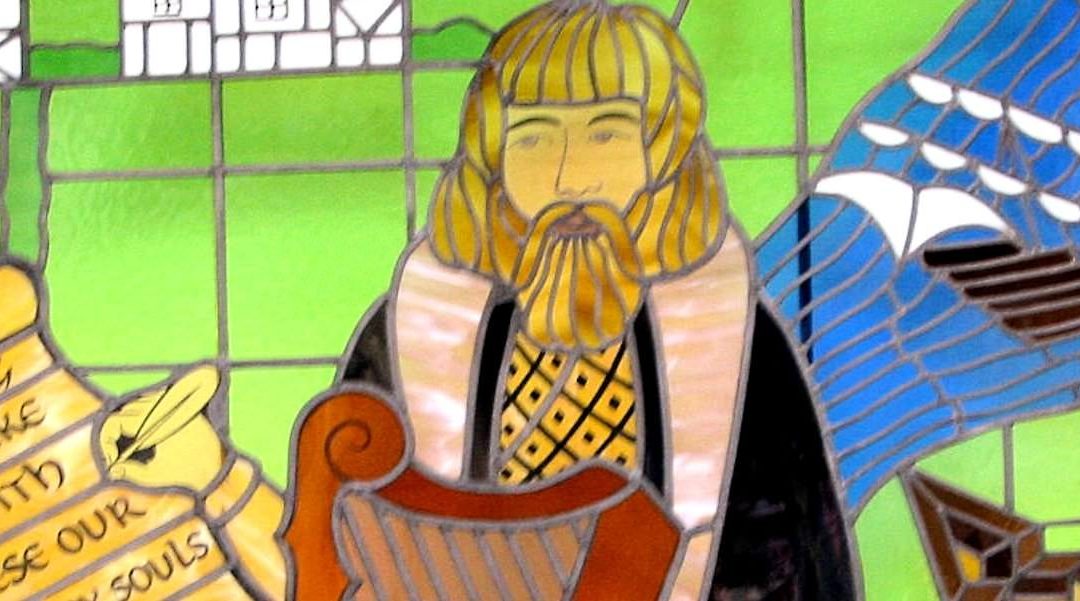
by Moe | Oct 7, 2019 | History of the Brotherhood, Irish History, Latest Media
“The native rulers fled abroad in the episode known as the Flight of the Earls but, as with all the major Irish kingships, the line of descent continues into the present day.”
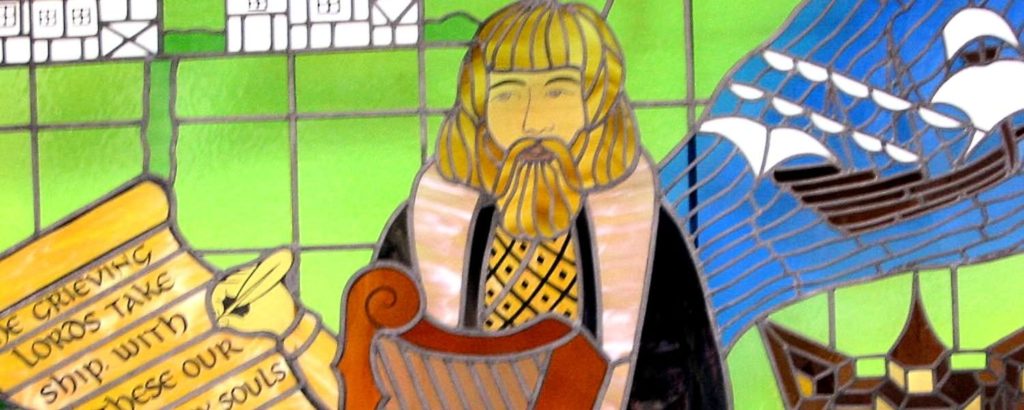
One of the oldest and most important kingdoms of Ancient Europe had originated in the Northern lands of Gaelic Ireland in a place that I would like to call the “New Tyre of the West.” It is from here where we can find the lost Tribe of Dan who is called in the Ancient Irish Annals the “Tuatha-da-Danaans.”
A tribe, people, and place who I believe along with the Tribe of Judah that one day may be credited with helping lay the cornerstone down for the foundation of Ireland and many other countries which spawned shortly thereafter.
The lost history of the Irish Tyranians who I believe is connected to the Biblical “Tribe of Dan” can be found secretly encoded into their long illustrious history, the geography of the region, and the hardships and success they have both endured and earned through countless centuries of fighting for God’s kingdom.
Today, we know of this location of the Irish Tyranians with their tribe the Tuatha-da-Danans in the province of Tyrconnell, also spelled Tirconnell, in the present-day County Donegal. Anciently, I have found that it was also spelled Tyr II, Tyrol, and or Tyrone.
ETYMOLOGY OF TYR-CONN-ELL
Before I delve into this fascinating history, it is important that I first quickly explain the etymology of the name Tyrconnell and also the County Donegal.
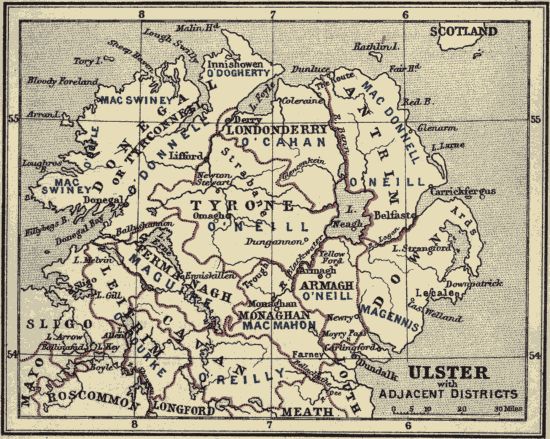
Tyrconnell is a compound word containing the words “Tyr, conn, and ell.”
In a previous article, Tyre-Egypt: God’s Ancient Stone Masons of the Tora, I had went over the etymology of Tyre where I show that it is derived for the old words in many different languages for rock, stone, and or mountain which was anciently called “Tur, Tsur, Tzor, Tor, Tora, Toorah, Tura, Tyr, Tir etc.”
I had also shown that the Phoenician Tyranians were world-traveling Master Masons who were the hereditary descendants of King Hiram in search of the Tyr Limestone. They were also world-famous throughout history to be the best shipbuilders, navigators, and businessmen who had a long tradition of naming their new settlements in a new language that can be proved had spawned from their Phoenician ports and alphabets which they took with them from the East.
After careful analyzation of their history, this proves to me that this was their simple secret formula for not only the birth of successful nation-states but also the legal identification of their landholdings ie: real estate titles.
They seem to follow the same exact Babylonian plan wherever they would venture around the globe as we find in Northern Ireland such as in Donegal County and Ulster where they governed. I would assume that if you are an ancient military and city planner for Tyre that they would both incorporate and honor the necessary ingredients for city planning from their ancestors which included cornerstones brought from their ancestral lands, language, names, laws, religion, and their main method of domination, commerce.
Their main military goal where they traveled was to find and seize all territory along a country’s largest waterways, rivers, and lakes for unlimited freshwater, agriculture and also the safest seaport for travel, commerce, exports, and imports.
In this areal photo of Northern Ireland, we can clearly see that any tribe that ruled from Donegal and Ulster controlled the largest waterways, ports, and from North Coast, they could easily deploy to Scotland and rule these lands with their boats and armies.
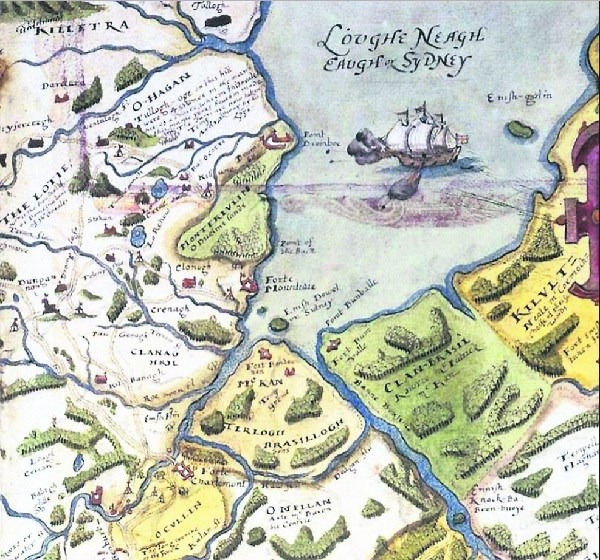
Not surprisingly, it was in these precise locations where they would not only find their prized white limestone (AKA – Tyr, Tir, Tur, Tor) for their immortal Masonic endeavors, but they would also be able to gain control of entire countries and sometimes multiple countries. Once they would become established, they would rule these lands through commerce, laws, religion, myths, and education which they created this system of conquering a native people’s mind, body, and soul which all coincide with one another.
Hence, what worked in Tyre, Egypt and even better in Tyre, Crete would also work wherever they would travel such as this new successful colony in what could be called the third Tyre – Tyrconnell, Ireland. They would also use place names to designate their specific domain (dan-ain), a compound word derived from dan-ain for the Tribe of Dan
This same military methodology that endures the test of time to this very day.
The meaning of the next word in Tyr-conn-ell is ‘conn or con’ which means ‘with’ and is related to the Gaelic ‘comh’ – a prefix denoting “with, com or con.”
Not surprisingly and as I have witnessed as a global fact, these Irish Masonic Builders of Solomon’s Temple from ancient Tyre had added the old name for God onto their name which is the Phoenician and Hebrew El also spelled ul,il, or al and can be variously translated as “God, Lord and or Governor”
With that said, the meaning of Tyrconnell is “Stone-Rock of God or “God’s Stone Masons.”
ETYMOLOGY OF DONEGAL COUNTY
As I mentioned above, the men of Tyre had honored their ancestor’s several ways and I have found that the main method by which they did so was the naming of geographic locations that they controlled like the city of Tyrconnell in their county which they named ‘Donegal.’
In this compound word of Donegal which is composed of the words “don or dan” and the word egal”, we can find the name of the lost Tribe of Dan who is called the “Tuatha-da-Danans” officially encoded into North Irelands ancient history.
The meaning of the Gaelic name Don is also Dan in English was applied to their territory Donegal in order to honor their Tribe of Dan. Since ancient times, the name Dan, Don and or Dom was a title of respect given in Ireland, Scotland, and England to learned or clever men.
For example, in the Lowland Scotch language, a Dominie was a “schoolmaster” and in Latin, a Dominus is a lord, a master and where we get the word dominate, to rule, and dominion, lordship, mastery, rule. Likewise, in Spanish, a Don is a title that is equivalent to “Sir or Master.”
This was the same title of Dom for the original Catholic Benedictine Priesthood which was first only applied to monks, but afterward was extended to persons of all respectable professions.
The next word in Donegal is ‘egal’ which simply means “equal or equal to”.
Therefore, we can say that the territory of Danites was the County Donegal which means the “County or Province Equal to Dan.” I believe this could be in reference to the “Western Branch” in which they being now masters of both Ireland and Scotland were equal in the West to their Eastern Brethren of the Tribe of Dan.
GEOGRAPHICAL SCIENCE SETS THEE WAYMARKS OF DAN
We find that the Tribe of Dan has Set thee waymarks in the places which were named after them meaning Dan’s resting place. This geography corresponds to ancient Irish history which says that in approximately 585, B. C, a ship landed at Ulster, Ireland, which was manned by the “Tuatha-da-Danans” (Tribe of Dan).
According to the annals, amongst their cargo on their voyage to Ireland they were in possession of a large oblong stone in which after their vessel had been temporarily disabled on the coast of Spain, during which the King of Spain attempted to obtain possession of the stone, but the king failed and the guardians of the stone, the Tuatha-da-Danans made it out of Spain to land on the beautiful coast of Northern Ireland.
In Ptolemy’s map of Ireland, we find Dan’s- Lough, Dan-Sowar, Dan-Sobairse, Dan’s resting place, and Dan’s habitation, and Dan-gan Castle (the birth-place of the Duke of Wellington).
Irish Historian, Thomas Moore had written that the Tuatha de Danaan (Tribe of Dana), “after sojourning for some time in Greece… proceeded from thence to Denmark and Norway”.
Author Geoffrey Keating (ca.1570 1646)had said that the Danaans were a people of great learning and wealth; they left Greece after a battle with the Assyrians and went to Ireland; and also to Danmark, and called it “DAN-mares”, “Dan’s country.”
According to The Essential Teachings of Herbert W. Armstrong, the Tribe of Dan left their serpent waymarks at “Danslaugh,” “Dansower,” “Dundalke,” “Dundrum,” “Donegal Bay,” “Donegal City,” “Dunglow,” “Londonderry,” and ” Dingle,”
THE IRISH OLLAMS SAME AS SONS OF ULAM ALL OVER THE WORLD
It was said in the Irish Annals that among the passengers of the Danans was a princess of remarkable beauty named Tephi who was accompanied by her guardian, afterward known by the name Ollam Fola. In my previous article, I explain that King Ollamh (Ollam) Fodhla was known as the great lawgiver and patron of learning to early Ireland.
To this day in Ireland as it did then, an ollam or ollamh means “a doctor, professor and or scholar of any kind of learning.” In other countries around the world such as in the Islamic nation, these learned me are known as the Ulam of Mulah.
King Ollam is mentioned in the “Annals of the Four Masters,” p. 412, as a sage and law-giver. He was said to have founded a College of Ollams at Tara, or a ‘School of the Prophets.” There was actually a famous college at Tara called the Mur Ollam han, or the House of the Learned. Four Masters, p. 293.
“Besides all these reforms the great legislator founded a University at Tara, which, for rank and dignity, preceded all others of the kingdom, and which he called MurOllam-han, or the College of Doctors (vide O Halloran, Book iv., chap. 1, p. 132), which, since we have discovered the word to mean “Revealers,” would stand for the School of Revealers.
Ollam Fola ordered the sacred records to be kept at Tara. “These form the basis of ancient Irish history.” (Annals of the Four Masters, note p. 297.) Ollam Fola was called the “Chroni. cle’” (vide Moore, i, 114.)
The name we find in Ancient Irish history as Ollamh (Ollam) we can also connect Biblically to the Sons of Ulam who Bedan, meaning Son of Dan can also align to ancient Irish history.
Another passenger on the boat mentioned in the Irish annals that were associated with Tuatha-da-Danans was a man named Simon Baruch who we can identify as part of the global Sons of Ulam or in Gaelic – Ollamh (Ollam) who have been tasked to bring this knowledge to the world.
This man Simon I will discuss in a future article in which I will detail the fascinating history of the Irish Sons of Ulam of whom I believe one of the most famous is Saint Columba or Co-ulum-ba who was once a Supreme Ulam of Ireland.
THE TYRE MASONS OF TARA IRELAND
We learn that from Irish mythology that when the Tuatha-da-Danans landed in Ireland, they were newcomers and there was already a ruling king whose castle in Meath, was changed from Lothair Grofinn to Tara.
It is said that Princess Tephi upon her death was buried here in a sepulcher that is covered by a mound of earth 60 feet square whose remains are intact to this day and is called “Tara or The Hill of Tara.”
The Hill of Tara is an ancient ceremonial and burial site near Skryne in County Meath, Ireland. According to ancient tradition, it was the inauguration place and seat of the High Kings of Ireland.
Here is an ancient depiction of the topography of this area.
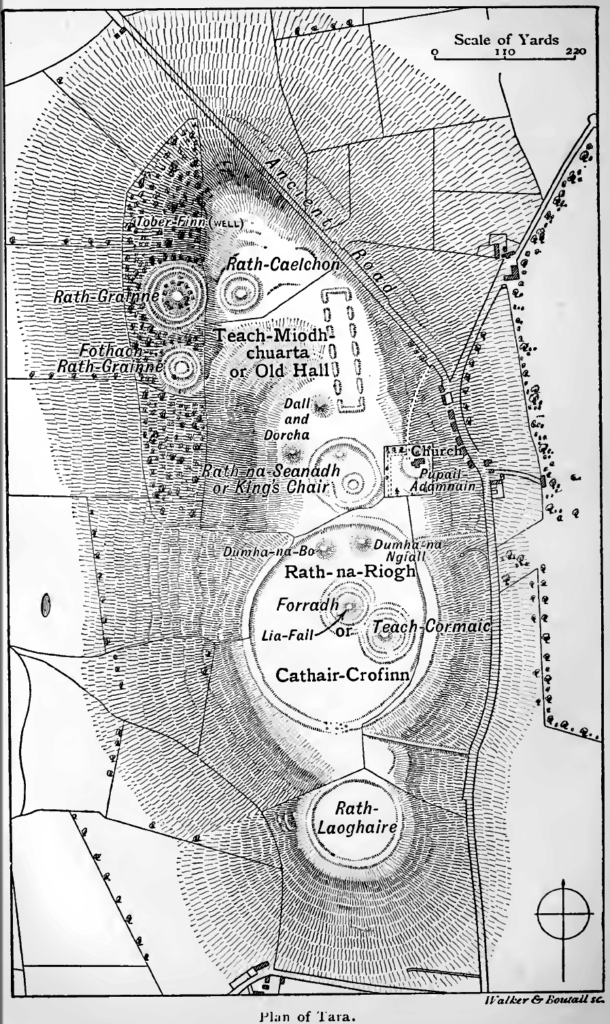
It is here in Tara, where you will discover the ancient remnants of the Masons of the Tyranian Irish who left numerous limestone monuments and earthworks — including burial mounds, round enclosures, the “Mound of the Hostages”, and a standing stone that some believe to be the “Stone of Destiny” (Lia Fáil).
There is also a church and graveyard on the hill.
Modern-day Tara is part of a larger ancient landscape and Tara itself is a protected national monument under the care of The Office of Public Works, an agency of the Irish Government.
To reiterate from past research, the name Tara comes from the words “tor, tur, tyr, tir, tora, torah, tura etc.” which all mean “stone or rock and later also to mean “mountain, chief, Lord, God, and or prince for their descendants.”
I believe these precise locations were known well over 2,000 years ago and were shown on Ptolemy’s ancient map of Ireland.
In Isa. 66-19 we read, and I will set a sign among them, and I will send those that escaped of them unto the nations, etc., to Tarshish and the Isles afar off. On an Ancient map of Ptolemy’s, England and Scotland are named Javan, and Spain, Portugal, and France are frequently mentioned as Tarshish, the ships of Tarshish, etc.
Ulam’s son, Bedan whose history and name we can bridge with the Tuatha-da-Danans and their Irish High King Baedan which means “Son of Dan” (King Tech- Baoithin, Baithen, Baithin, Baithan, Baetin, Baitan Mor, Báetán mac Muirchertaig, “Baithen the Great”.)
This King Baedan became the father of the senior line of the Hy-Niall kings (King of Ireland and Scotland) because he was the great-grandson of Niall of the Hostages and his grandmother was Scottish Princess of Dalriada named Erca which united the two ancient kingdoms of Scotland and Ireland into one.
The Pictish Chronicles informs us that they were from Ollamhan, whence comes Mur Ollamhan at Tara, to Fiacha, son of Baedan,” who fettered the hostages of Erin and Alba. Also, seven kings of the Alban Cruithnech governed Erin (Ireland and Scotland) at Tara.
For example, Of this king’s descendants, we see the name Olma encoded into their sirnames such as his son Colmán Rímid and Maeluma.
KING MILESIUS OF IRELAND THE SAME AS KING MILESIUS OF CRETE
As I mentioned above, in the tradition of honoring their mariner ancestors, they would rename these new lands they had conquered and even the characters in their myths and also importing the very language, laws, and history in the very boats that carried them.
This is where we meet with more of their ancient mythology encoded into the Irish Annals, which include volumes called the Annals of Ulster, the Annals of the Four Masters, etc.
A major clue to the original homeland of these people comes from the old Irish folklore which states that they arrived in Ireland with an expeditionary force from anywhere between the 17th to the 6th centuries B.C. They are said to have spawned from the fifth son of King Milesius who was the progenitor of the Milesian race and hereditary Father to some of the earliest tribes of Ireland and the noble families of Ulster.
This story of King Milesius in Ireland coincides exactly with the mythology of their homeland which I believe was both in old Tyre (Tora, Tura) Egypt and in new Tyre on the Holy Island of Crete.
The ancient homelands of their ancestors.
In researching the most remote mythology on this King Milesius, we will discover that the oldest reference takes us directly to the ancient mythology of Crete where we find it was King Melissus who first introduced sacrifice to the Gods, and introduced new rights and sacred ceremonies on this island.
He had two daughters Amalthea and Melissa, which nursed the child Jupiter, and fed him with goat’s milk and honey. Melisseus was the eldest and leader of the nine Curetes (Kuretes) of Crete. The meaning of the name Melisseus is “bee-man,”and another form of Melissus, in Cretan means, “honey-man.”
CURETES & CABIRI OF CRETE SAME AS CABIRI & DRUIDS OF IRELAND
According to Diodorus Siculus, the Curetes lived in the time of Rhea; The Father of History, Herodotus and Strabo writing later both had said that the Curetes were originally Phoenicians who accompanied Cadmus out of Phoenicia.
The ancient Curetes (Kuretes) of Crete I have written extensively about these various connections in history with the Priesthood of Zeus who were also known by many other names such as the Telchnines (Telknines, Telkhis, Telegonus, or Greek, Τελχῖνες), Corybantes, Dactyls, and Cabiri.
These same Priesthoods with their same history and myths bring us to another connection to Ancient Ireland that would be hard to refute which is through the history of a well-known but mysterious Priesthood called the Druids.
For example, both the Cretans and Egyptians had a priesthood that was called the Cabiri and so did the ancient Irish.
In a previous article, The Irish Druid Cabiri Are the Same As the Phoenician Cabiri, I explained that you will find that the Latin name Cabiri and Old Irish Cabur is derived from the Phoenician Hebrew word Kabir that is sometimes spelled Cabir, Chabir, Chabiru, and Chabireh. Cabur was once of the ancient God of Ireland being that of the ancient Irish pantheon of Gods known as Axire, Axcearas, Coismaol, and Cabur.
The priests of this God were called the Druid Caburi or Cabiri.
According to the ancient Phoenician historian, Sanchoniatho, the mysteries of the Cabiri were first celebrated by the Phoenicians, and introduced into Greece. He had written that first or original Cabiri were the eight Sons of Sydyc, who was a Canaanite.
They lived in the Days of Taaut of Thoth who is the same as the Phoenician Hermes. Pausanias, the Greek historian and geographer who lived in the time of his cousin, the Roman Emperor Hadrian, relates, that the Mother of the Gods was anciently worshiped at Thebes with the Cabiri, whose Names and Mysteries he durst not divulge.
THE FALL OF THE IRISH TYRE
The kingdom of Tyrconnell represented the core homeland of the Tribe of Dan who became known in the Irish Annals as the Tuatha-da-Danans with various families and subunits of families whose the most successful under the banners of the Ulaid, Northern Uí Néill, Niall of the Nine Hostages, and Ulster all vying for power.
The chief seat of the ancient royal Irish families was sacked and ceased several times by English forces in their attempts to reduce the country to obedience to the royal authority. However, the warrior spirit of the Irish branches of the Tuatha-da-Danans proved to be a formidable fight to the invading English until the close of the reign of Elizabeth, when it would become the location of fighting during what was called Tyrone’s Rebellion at the end of the 15th Century.
It was said to be burned by Hugh O’Neill, earl of Tyrone, to prevent its falling into the hands of the queen’s forces in Ireland.
Their power continued to exist until the 17th century when before the English invaded their lands, the ancient native rulers of Ireland fled to the North and abroad in the episode known as the Flight of the Earls. It was then finally incorporated into the English-ruled Kingdom of Ireland.
But, as with all the major Irish kingships, the line of hereditary descent continues into the present day.
LEGAL BANNERS FOR THE WARRIORS OF GOD AND THE KING
In researching the Ancient History of Ireland, you will find that it was here that the first laws and legal system of the Western World was developed in the reign of Ollamh Fodhla who I have mentioned were the learned men who ruled over their people. This legal system was known as the Brehon Law which operated late into the 17th century and was abolished and later became the English common law system. After the English had conquered these lands in the time of Elizabeth I, the Brehon laws were considered to be old, lewd, and unreasonable.
However, one of the most important legal ordinances of Brehon Law was for Tribal Heraldry where their tribal insignias bearing various symbols and colors would identify their rank. It is my understanding that before this time in the West, tribal and royal heraldry was not governed by a legal assembly such as the Ollamh Fodhla.
The various Celtic Tribes who jostled for control of Ireland were distinguished by particular symbols and colors each class of society was to wear in their clothes were specially regulated by Brehon Law.
Servants wore clothes with one color and one step up was a rent-paying farmer who wore two colors. Military officers wore three colors and their chiefs wore five colors. The highest members of society being the ollamhs and poets wore six colors in the clothes and seven colors in the clothes of kings and queens.
This system of royal authority was left to the family and tribe to be in charge of their own heraldry and royal rankings which would leave this legal loophole open to corruption and fraud. In researching the royal families of the world and priesthood over the last 2,500 years, I would say with confidence that this fraud has most likely happened quite often. Especially under the English Common Law System.
The Rev. Geoffrey Keating, in his “General History of Ireland,” explains that in the reign of Ollamh Fodhla, in a “great triennial assembly at Tara, it was ordained by a law that every nobleman and great officer should, by the learned heralds, have a particular coat-of-arms assigned to him according to his merit and his quality, whereby he should be distinguished from others of the same rank, and be known wherever he appeared.”
An ancient historical account of the battle of “Magh Rath,” that was compiled from ancient manuscripts of Finn Mac Gorman, Bishop of Kildare and later transcribed by John O’Donovan from the Book of Leinster shows us exactly the names, symbols, and colors of some of these families.
Finn Mac Gorman was Bishop of Kildare in the first half of the twelfth century and died in the year 1160. Here is Mac Gorman account of the various Tribal Banners which was published in 1842 by the Irish Archaeological Society (p. 227, see also p. 847):—
“Mightily advance the battalions of Congal
To us over the ford of Ornamh;
When they came to the contest of the men
They require not to be harangued.
The token of the great warrior of Macha—
Variegated satin on warlike poles;
The banner of each bright king with prosperity
Over his own head conspicuously displayed.
The banner of Scannlan—an ornament with prosperity,
And of Fiachna Mor, the son of Baedan,
Great symbol of plunder floating from its staff
Is over the head of Congal advancing towards us.
A yellow Lion on green satin,
The insignia of the Craebh Ruadh,
Such as the noble Conchobar bore,
Is now held up by Congal.
The standards of the sons of Eochaidh
In front of the embattled hosts,
Are dun-coloured standards like fire.
Over the well-shaped spear-handles of Crumthann.
The standard of the vigorous king of Britain,
Conan Rod, the royal soldier,
Streaked satin, blue and white,
In folds displayed.”
IRISH TYRE AND THE TRIBE OF DAN FROM IRELAND CONCLUSION
To some people of modernity, this history seems nothing but a mythological fairytale and or legend of days gone by. But to others like me, it is a beautiful homage to the true history of our people and the world in this 6th Age encoded into our Holy Scriptures, nation myths and the laws of our lands of which we are in the year 2019.
The facts of hiostory are well known that the Irish tradition tells us that they are a fighting race, and as it were, “mariners” (Ezek. xxvii. 8) or seafaring men. They have hung their shields on the walls of Tyre (Ezek. xxvii. 10), and being insular, they have been vindicated by true history and their character as the Warriors for God via the Tribe of Dan.
Let it be said that legend informs us that the Tribe of Dan had also brought with them the famous Stone of Destiny, and is also known as the Stone of Scone and The Coronation Stone (Liagh Fail) on which all succeeding kings of that race were crowned. It was used for centuries in the coronation of the monarchs of Scotland, and later the monarchs of England and the Kingdom of Great Britain.
Historically, the artifact was kept at the now-ruined Scone Abbey in Scone, near Perth, Scotland. It is also known as Jacob’s Pillow Stone and the Tanist Stone, and in Scottish Gaelic, clach-na-cinneamhain.
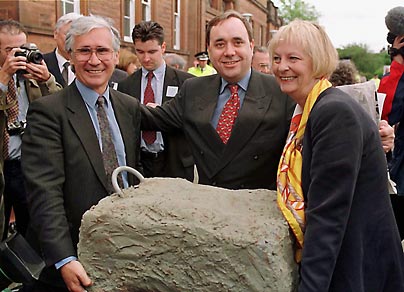
Fergus the Great borrowed the Liagh Fail to be crowned on, after his invasion of North Britain; and, being deposited in the abbey of Scone, it continued there until the reign of Edward I., who had it conveyed to Westminster Abbey, where it is now placed beneath the inauguration chair, having its name changed for that of ‘Jacob’s stone.’
Its value appears to rest upon the destiny contained in a very ancient Scythian or Irish verse, the purport of which is, ‘that where the Stone of Destiny is preserved, there a prince of the Irish race should govern.’
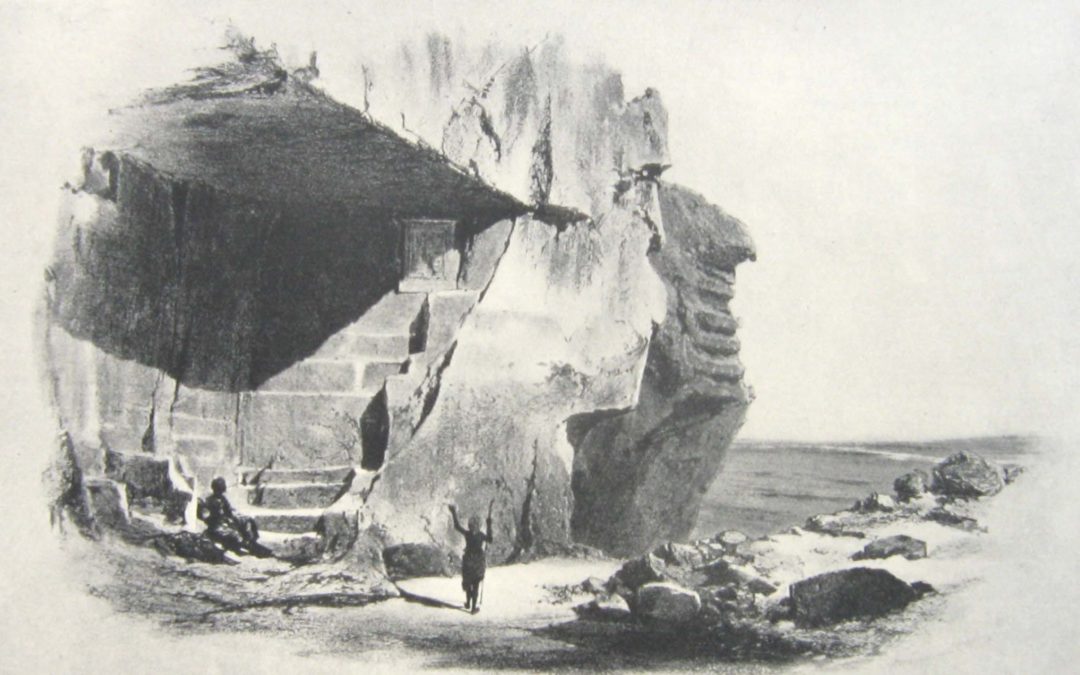
by Moe | Sep 22, 2019 | Freemasonry, History of the Brotherhood, Latest Media
In my search for the ancient meaning of Tyre, I have come to the etymological revelation that it is derived from the word for special type of ancient Egyptian limestone rock called today “Tura or Tora.”
Today, you will find these holy stone quarries of Tyre, Egypt located in the modern town of Tora in the Cairo Governorate.
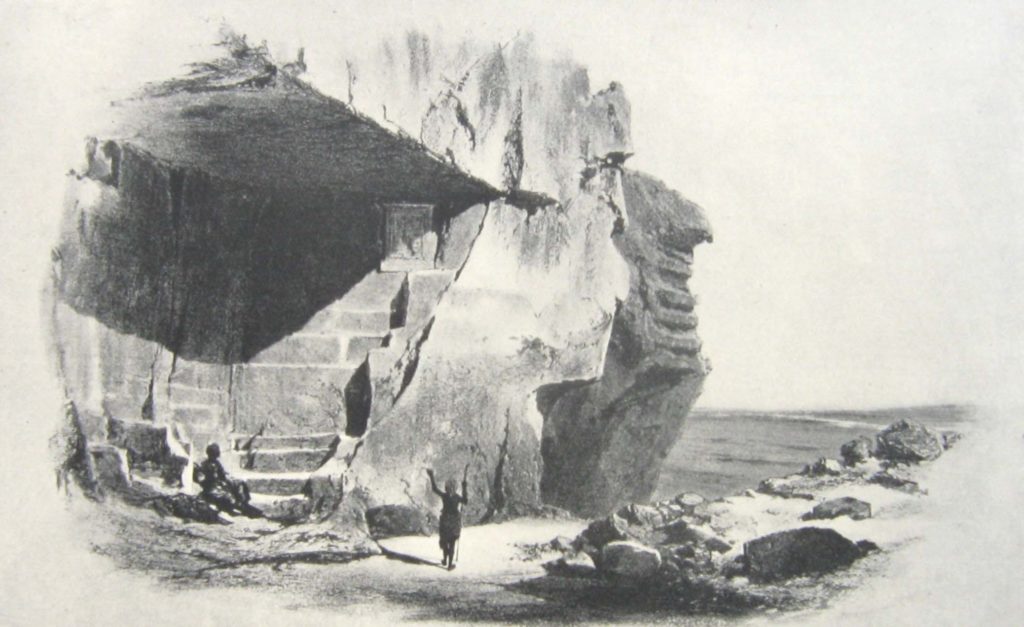
Please keep in mind that as you read my research below, the Old city of Tyre is documented in Masonic mythology as being the home to the de-facto king of the Freemasons, Hiram Abiff. A person who I have also connected to in previous articles to the first King of Tyre, Abibalus (Obediah, Abi-Beda etc.) and also King Saul who was credited biblically as the first king of the combined kingdoms of Judah and Isreal.
It is also important to note that the men of Tyre ie: The Tyranians were not only builders – ie: Masons, they were also employed in the arts of shipbuilding, writing, linguistics, history, Babylonian magic, religion, weapons-making, military planning, and most of all, commerce which all can be easily corroborated via historical, biblical, and now scientific accounts which validate one another.
THE MYTHS OF TYRE AND THE MANY DIFFERENT SPELLINGS THROUGH TIME
In studying the etymology of the word Tyre, I have found that it has been spelt variously over the last 2,000 plus years as Tiryns, Tyrsenoi, Tyresenes, Tyros, Tyrus, Tyrosh, Tyrion, Tyrseni, Tarshish, Tarsus, Tura, Turan, Tora, and or Tursha to name a few.
To give you a small example of the different spellings found in the course of my research, we can find that Tyre is spelt numerous ways in the Bible such as Tarshish – (‘the ships of Tarshish’) and xxxviii. 13 (‘merchants of Tarshish ’).
The expression ‘the ships of Tarshish’ which occurs several times in the Bible (1 K.x.22: xxii.48: Ps. xlviii. 7: Is. ii. 16: xxiii. l, 14 (in connection with Tyre) and has also been identified with the Hebrew name for Tartessus or South Spain and with Carthage (so the Septuagint Ezekiel and in Is. xxiii. in a passage which refers to Tyre), with Tarsus.
I have also found multiple locations of the city Tyre in which the Mother City was known as Palaetyrus (ancient Tyr) and was located on the mainland in the classical sources. Meaning, there were two Tyres which I will explore more in-depth in a future article.
In Greek mythology, Tyros or Tyro was the Goddess-mother of the Tyrians and Tyrrhenians, or Tyrsenians whose father was named Cretheus (Crete) along with Sidero (Sidon), and Eolus, who are credited as the founders of cities in Hellas.
All the great historians and poets mention the Men of Tyre under the name of the place they call Tyree or Tyry and the people under the appellation of the Tiryns, Tyrsenoi, Tyresenes, and or the Tyrsenians. The Greeks had called the Etruscans by the name of the Tyrsenoi.
As early as the 15th-14th centuries BC, we hear of a place and a people known as the Tiryns who are both expert Masons and mariners of the Sea.
The Penny Encyclopedia gives us this description:
“The Greeks attributed most architectural works § were characterised by rude massiveness and great antiquity to the Cyclopes, and such works were consequently described as Cyclopean. Homer (Iliad, ii. 559) calls Tiryns the ‘walled, or rather the ‘wally ‘Tiryns: and Pausanias (ii.25), 1000 years after him, thus describes the remains, as they existed in the second century of our aera.
“The ruins of Tiryns, he observes, “were on the right of the road leading from Argos to Epidaurus. The wall of the fortification, which still remains, is the work of the Cyclopes, and is built of unwrought stones, so large that not even the least of them could be even moved by a pair of mules.”
In mythology, King Proetus was the reputed founder of Tiryns, was succeeded by his son Megapenthes, who exchanged Tiryns for the kingdom of Argos with Perseus, son of Danaë and Jove, the mythic founder of Mycenae (Pausanias, II., 16).
At the time of the Trojan war, Homer (Iliad, ii. 559) represents it as being subject to the kings of Argos. Subsequently, it was partially destroyed by the Argives.
The date of that event is uncertain; but from two passages of Herodotus (vi. 83, and ix. 28), in which mention is made of Tiryns, it appears that it existed up to B.c. 480, and it is probable that it was overthrown about the same time as Mycenae, B.C. 468. (Clinton, Fasti Hell., ii., p. 425.)
According to Strabo (viii., p. 373), the Tirynthians, on leaving their homes, retired to #. idaurus : according to Pausanias (ii. 25),
There was an ancient tradition that there was an old people called Tyrsenes in the north Aegean Sea who was later identified with the Attic Pelasgians and rulers of Athens.
We read about Tyrsenoi in Homer’s Hymns to Dionysos, about how the god Dionysos appeared as a youth on the sea-shore, and was seized by Tyrsenian pirates (Sea Peoples), who in vain attempt to bind him.
Thucydides identifies the Pelasgoi with the Tyrsenoi.
Tiryns is today called an ancient archaeological site in Argolis in the Peloponnese and the location from which mythical hero Heracles performed his 12 labors.
There is also the legend of the Cretan king’s general named “Taurus” who carried off Europa after having taken Tyre by storm.
When speaking of the Tyranians, the great Roman poet Tibullus had said, “Prima ratem ventis credere docta Tyros.”
It is easy to see how the Greek myths of the Tyrsenoi from Tiryns and the Tyr-senian pirates or the Tyr-senoi can be connected to the Tursha AKA Sea Peoples and ultimately to Tyre. It is in the meanings of these various words where I believe we can easily discover the secret origins of these people from Tyre – the Tyranians (Tyrrhenians)., meaning their original homeland.
Words that I believe can also be etymologically connected to a special book where they document their history and laws known universally as the “Torah” AKA Tur-ah – the Hebrew or Phoenician Bible which is also known as the Old Testament. We also know of these collective writings as the scripture of skrip’-tur in which Moses was given the Laws upon stone tablets of Turs.
THE ETYMOLOGY OF TYRE
All this research leads us to the true meaning of Tyre which I have found is derived from the old word for rock or stone which was anciently called “Tur, Tsur, Tzor, Tor, Tora, Toorah, Tura,” to name a few. These words are variously translated to also mean mountain for it is from the mountain which we obtain the rock or stone to build.
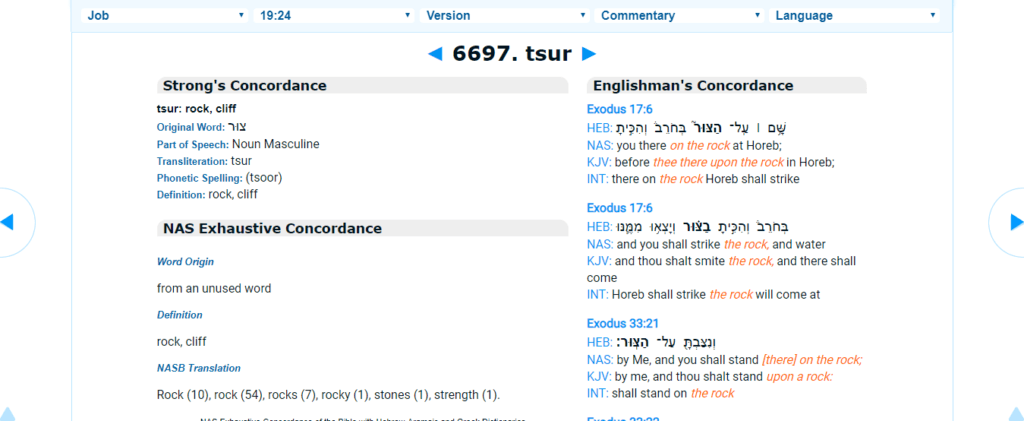
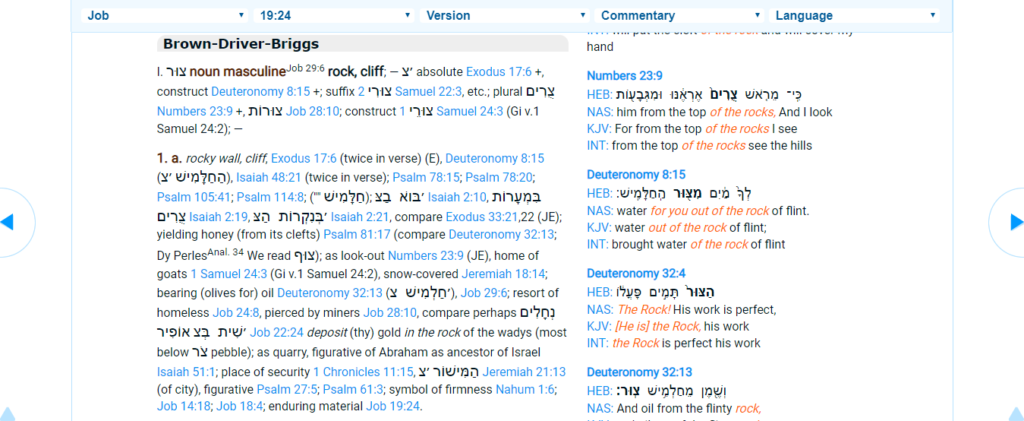
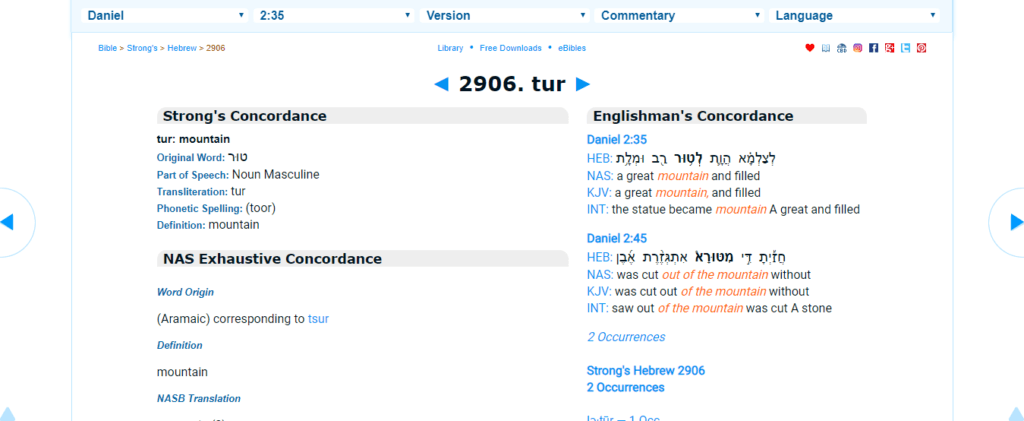
The main revelation of this word is found in one of the oldest cities in the world that housed one of the most infamous of all rock quarries in Egypt and the world.
A city called Tura and someday we may call it again, “Old Tyre.”
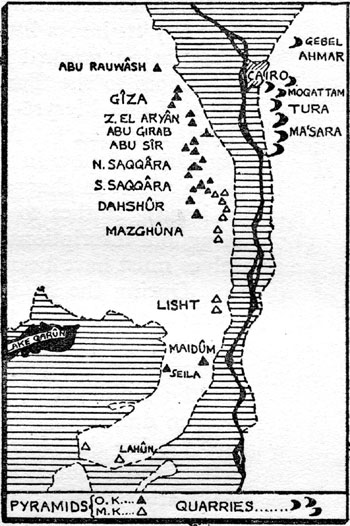
Tura or Tora, Toorah etc. (Egyptian Arabic: طرة Tora IPA: [ˈtˤoɾˤɑ]) is the exact location where Ancient Egyptians or who we may call Masonic Tyranians drew massive quantities of special type of limestone that was the most prized in all the world because it was the strongest, whitest, and most beautiful.
It is alleged by some researchers that approximately or precisely 144,000 of these highly polished Tura limestones were carefully interlocked together by Masons who decorated the exterior of the Great Pyramid of Giza. The brilliant result was the whole structure was illuminated white in the light of the reflected sun.
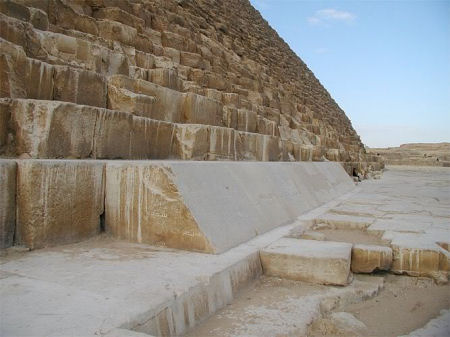
This unique stone is described today as creamy in colour and the denser the stone, the stronger which the densest stones can be found in Tura ie: Old Cairo. The greater the density the less the water absorbed and the cracking load is not much under the breaking load.
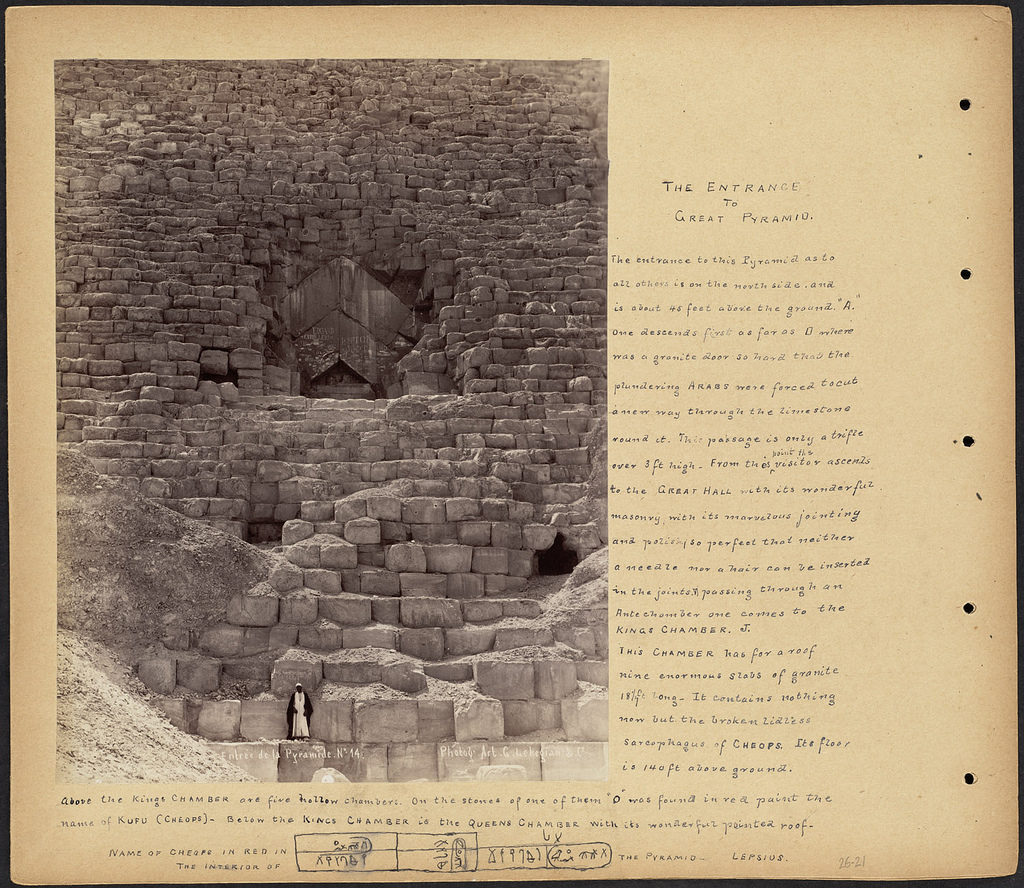
In Etruscan mythology, the “God of the boundary stone” was called “Turm” which can easily be connected with Tur.
A turret (tur-ret) is a little stone tower (from Lat. turris, Gk. rvpaa, tyrsis, riippa, tyrris, tower).
Another precious tur or stone of a beautiful blue colour worth mentioning is called “tur-cois, tur-kis or turquoise” which was highly prized by the Ancient Egyptians, who opened Turquoise mines in the Wadi Maghara, in the Desert of Sinai.
An Arabian authority on precious stones, Ahmed Teifascite, born about 1253, in writing about the turquoise quotes from Aristotle as follows;
“The turquoise is a stone with which the Kings of Damascus never failed to adorn their necks and hands and to employ for many other purposes because, among the great, the stone possesses the property of removing from its wearer the danger of being killed. Furthermore, when reduced to powder it is of assistance in case of stings from scorpions and dangerous and venomous reptiles.”
It appears through time, the words tor, tur, tyr, tir, tora, tura etc. became known to also variously mean mountain, chief, Lord, God, and or prince for their descendants.
For example, in ancient Egypt, the Pharoah had a turdannu (turtan), meaning “commander-in-chief” (POTUS) in charge of the administrative affairs of Egypt.
We find the Anglo-Saxon word fir, and tyr, meaning lord, prince, chief, as well as glory, dominion, power and Tyr in the Edda who was the name of the god corresponding to Mars.
Tur is the meaning of mountain in Aramaic.
The meaning of Tartar is a hard calcified deposit that forms on the teeth and contributes to their decay and also means an unkind or angry person and a member of any of the various tribes, chiefly Mongolian and Turkish, who, originally under the leadership of Genghis Khan.
A Scottish Highlander or Scotsman was known as a “Tartan” in ancient days. These Tartans wore a special type of clothing called tartaryn (“rich material”), from Middle French tartarin (“Tartar cloth”), and Middle French tiretaine (“cloth of mixed fibers”), from Old French tiret (“kind of cloth”), from tire (“oriental cloth of silk”), from Medieval Latin tyrius (“material from Tyre”), from Latin Tyrus (“Tyre”).
There are the gods of Old Asia Minor, Tar and Tarku who are clearly connected with the word Tara or Tora for it is the Esthonian word for “God,” and with Tar, “chief.”
Then we see the Akkadian Tur-an who is the “Chief of the Sky.”
The Report and Transactions – The Devonshire Association for the …, Volume 7 further documents;
Lu Gibson’s edition of Camden’s Britannia, we are informed that Brent Tor is a name signifying ‘a high rocky place.’
Pliny mentions dyr as a Mauritanian word for Mount Atlas. Taurus is the same designation Latinized in Asia.
For the Arabs, Tours is an elevated spot in the Gulf of Suez.
In Norway, Tours is the name of one of the highest mountains.
King—”The word occurs in both Somersetshire {Glastonbury Tor) and Derbyshire, and is apparently cognate with the Hebrew Tsoor = a rock, and the Phenician Tor = Tyre (compare also the Turkish dagh, and the form which occurs so frequently in the Caucasus).” pp. 208-9.
Moore—” Tor. A rude rack [? rock. W. P.] on the top of a hill.”
Bannister—” Torr. Prominence or hill {tor, a belly); a peak {tour, tower); water {dour).” Halliwell—” Tor. A bill. Devon.”
Grove—” Tor. A high rock; as Mam-tor, a high rock in Derbyshire. North.”
Prince—”Brewer, Lord William, was bom …. most likely at Tor Brewer, so called of old from the torrs and rocks which abound in these parts, and this noble family. But of latter times … it is commonly stiled Tor-Mohun.”
The best explanation that I have found similar to my own is by author Sir William Smith in his book, A Dictionary of the Bible: Red-Sea-Zuzims. Sir Smith writes;
“TYRE (nix, n’s, i.e. Tzór: Túpos: Tyrus: Josh. xix. 29; 2 Sam. xxi ‘. 7; Is. xxiii. 1; Ez. xxvi. 15, xxvii. 2, &c.). A celebrated commercial city of antiquity, situated in Phoenicia, on the eastern coast of the Mediterranean Sea, in latitude 33° 17’ N. (Admiral Smythe’s Mediterranean, p. 469).
Its Hebrew name “Tzór” signifies a rock; which well agrees with the site of Sár, the modern town, on a rocky peninsula, formerly an island.
From the word “Tzör” were derived two names of the city, in which the first letters differed from each other, though both had a feature of their common parent: 1st, the Aramaic word Tura, whence the Greek word Turos, probably pronounced Tyros, which finally prevailed in Latin, and, with slight changes, in the modern languages of the West; and, 2ndly, Sara, or Sarra, which occurs in Plautus (Truc. ii. 6, 58, “purpuram ex Sarā tibi attuli”), and which is familiar to scholars through the well-known line of Virgil, “Ut gemmá bibat, et Sarrano dormiat ostro” (Georg. ii. 506; comp. Aul. Gell. xiv. 6; Silius Italicus, xv.203; Juvenal, X. 30).
According to a passage of Probus (ad Virg. Geory. ii. 115), as quoted by Mr. Grote (History of Greece, iii. 353), the form “Sara” would seem to have occurred in one of the Greek epics now lost, which passed under the name of Homer. Certainly, this form accords best with the modern Arabic name of Sár. PALAETYRUs, or Old Tyre.
There is no doubt that, previous to the siege of the city by Alexander the Great, Tyre was situated on an island; but, according to the tradition of the inhabitants, if we may believe Justin (xi. 10), there was a city on the mainland before there was a city on the island; and the tradition receives some colour from the name of Palaetyrus, or Old Tyre, which was borne in Greek times by a city on the continent, 30 stadia to the south (Strabo, xii. 11,24).
But a difficulty arises in supposing that Palaetyrus was built before Tyre, as the word Tyre evidently means “a rock,” and few persons who have visited the site of Palaetyrus can seriously suppose that any rock on the surface there can have given rise to the name.
To escape this difficulty, Hengstenberg makes the suggestion that Palaetyrus meant Tyre that formerly existed; “quae quondam fuit;” and that the name was introduced after the destruction of the greater part of it by Nebuchadnezzar, to distinguish it from that part of Tyre which continued to be in existence (De rebus Tyriorum, p. 26).
Movers, justly deeming this explanation unlikely, suggests that the original inhabitants of the city on the mainland possessed the island as part of their territory, and named their city from the characteristic features of the island, though the island itself was not then inhabited (Das Phönizische Alterthum, vol. ii. gt. i. p. 173). This explanation is possible; but other explanations are equally possible.”
In my opinion, the words whether it be Tzör, Tura, Tora and Tyre, they are all etymologically connected through history to the word stone or rock with similar meanings in various languages and we also find these names of some of the most important coastal and commerce settlements where they have left their cornerstones around the globe which I will explore in a future article.
AN OLD DESCRIPTION OF THE ANCIENT EGYPTIAN TOWN OF TORA (TURA, TYRE)
I thought it would be interesting to the reader to read this account from a book written in 1885 called “Lower Egypt, with the Fayûm and the peninsula of Sinai,” by Karl Baedeker gives us a clear account of the importance of this city. Baedeker writes;
“The railway to Helwān, which was constructed mainly for the purpose of connecting the great military establishments at Tura with the Citadel, runs from the Place Méhémet Ali, in a South direction. It skirts the base of the Mokattam, on the slopes of which are the interesting ruins of a mosque, and traverses the burial-ground of the Mamelukes (p. 327). To the right lies the oldest part of Cairo, with the Mosque of Tulān (p. 265).
On the same side, we next observe the Necropolis of Imām Shafe’i (p. 327), beyond which is the valley of the Nile, with the various groups of pyramids rising above it (p. 404). Before reaching (4 M.) Basātīn, a village situated in one of the angles of a triangular piece of arable land which extends a considerable way into the desert, we perceive the Jewish burial-ground on the left, and, farther on, the broad Wädi et-Tih (p. 339), which separates the Mokattam range from the Gebel Tura.
Traversing a tract of desert sand, the line approaches the Nile, on which lies the village of Tura.
A little to the right are the large military establishments and gunpowder mills. On the hill stand the ruins of an old fort. 91/9 M. Massara, a village on the Nile, is noted for the slabs of stone obtained in the neighbourhood, known as ‘palattes’, and used for paving purposes in almost every house of the better class in Egypt.
From either Tura or Masara we may visit the Quarries of Tura (p. 405), which yielded material for the construction of the ancient temples, and are still worked.”
THE EGYPTIAN TYRE, TURA, AND TURSHA CONNECTIONS
The Masons have left their stones of Tura (Tyre) that were used for many building projects who some estimate for approximately six thousand years at least. It was said that the architects of the pyramids made their quarrymen (Masons) tunnel into the mountains for hundreds of yards until they found a bed of stone suitable for their work, and traces of their excavations are still visible to this day.
Upon the ancient Egyptian monuments dated in approximately as early as 1300 B.C. or before, you will find the men of Tyre are called by the name the “Tuirsha, Tursha and or Turusa” who are clearly classified as a “maritime people” who had “invaded Egypt” and are listed as among the enemies of Egypt.
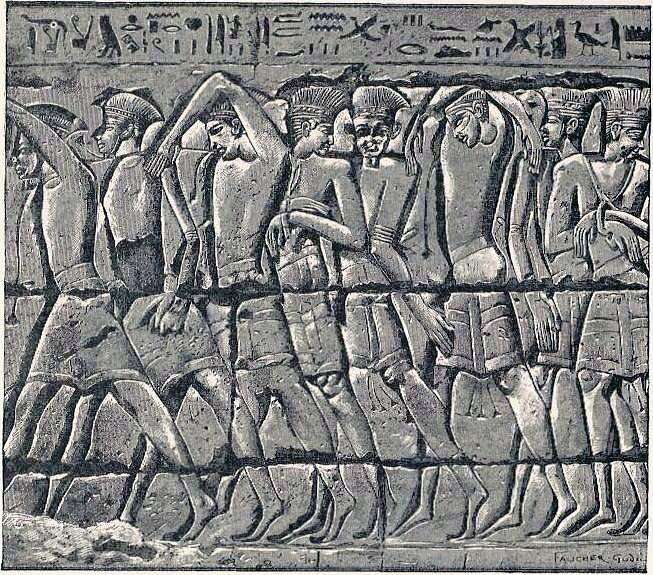
It is documented that during the reign of Meneptah, the Tursha invaded Egypt from the coastlands in alliance with the Libyans, Achaeans, and other coastal tribes from Asia Minor. It is said in the great inscription which records the defeat of these “Sea Peoples” or who we may now call the “Tyranian invaders.”
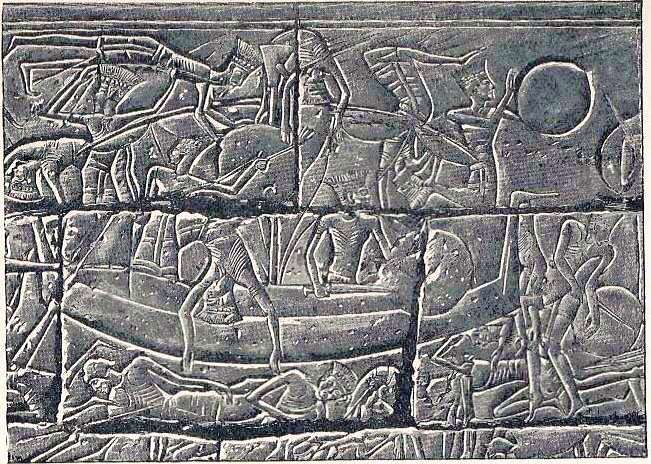
“The Tursha took the lead in this war, all the warriors from that country having brought their wives and their children.”
The fact that the Tursha (Men of Tyre) found a home in Egypt from the West by the time of Rameses III during the so-called great invasion of Greco-Asiatic and European tribes which has been generally accepted by most historians.
It is the mysterious but powerful people the Egyptians called the Tursha whom I have connected to the royal family of Tyre and their book, the Torah (Tura or Tora).
We that Moses upon his entrance into the Promise Land on top of a Holy Mountain (rock) was given the history and laws of his people that he had written down on “stone tablets.”
Stone tablets that are said to be composed of five books that are collectively called the “Tora.”
It is evident that these special stones or Tora (Tyre) play a significant revelatory clue to the immortal origins of these people and serve as cornerstones for future prophets to identify and reconcile this lost but revealable history.
These facts I believe can be further substantiated via a discovery made in 1889 when an Egyptian archaeologist named Mr. Flinders Petrie AKA Rock or Stone 😉 was excavating at Gurob in the Fayoum where he exhumed what has been described as a “yellow-haired mummy.”
This blonde person is described in the hieroglyphs as a high or ryal official who is called Ш, wml Ё Ш Ъ Ш l, “An-Tursha”, “Anen-Tursha” or “Stone, Rock or Pillar of the Tursha”, who, according to the rest of the inscription, was governor of Heliopolis.
The yellow hair ie: blonde hair and the lower lobe of “An-Tursha or Anen-Tursha’s ear is pierced indicating his foreign ethnicity which I believe to be of Tyrian origin.
To be a governor of Heliopopolis, you had to be a very important person who was in charge of all Lower Egypt and the coastal ports as well as the country’s religion and the Pharoah’s stonemasons.
The native name of Heliopolis was I͗wnw (“The Pillars or The Stones”) which again connects to the people of stone ie: Tyre (Tur, Tor, Tora etc) to Tura, Egypt and also the Tursha (Sea Peoples). In Roman Egypt, the city belongs to the province Augustamnica, causing it to appear as Heliopolis in Augustamnica when it needed to be distinguished from Baalbek. Today, it remains a titular see of the Roman Catholic Church.
The mummy, Anen-Tursha is described in The Discoveries in Crete and Their Bearing on the History of Ancient History by Ronald Montagu Burrows who says that the Tursha can be connected “with the group of names of invading tribes which can now with scarcely a doubt be equated with Achaeans, Teucri, and Danai.”
Burrows had written;
“It has been known for some years that there was buried in Egypt, at Gurob in the Fay urn, not much later than 1300 B.c., a high official called An-Tursha, or ” Pillar of the Tursha.”
The name is followed by the ethnic and the country determinatives, and the type of the mummy’s face, and the piercing of the lower lobe of its ear, are recognised by Professor Petrie as non-Egyptian.
It has been argued that this implies a settlement of foreigners called Tursha in the neighbourhood, and the name has been connected with the Thuirsha or Turusha who trouble Egypt with the Akaiuasha in the reign of Merenptah, 1234—1214 B.c.’ The name thus falls into line with the group of names of invading tribes which can now with scarcely a doubt be equated with Achaeans, Teucri, and Danai.”
Biblically speaking, if the Tursha are who I believe we can connect to the Men of Tyre and can also possibly be equated with the Danai ie: the Tribe of Dan, we can start to make more revelatory sense of this confusing history to make ORDO AB CHAO.
In researching both men of Tyre and Tribe of Dan, you will find that they were an interrelated royal family of mariners, shipbuilders, Masons, and judges of their people (race) through a very important son who in the bible is called Obed or Obediah and the Widow’s Son and Masonically speaking, he is known as Hiram Abiff who it is no surprise to me is also known as the Widow’s Son.
These connections can be found in the Scripture in the seventh chapter of the first book of Kings where it says;
“And king Solomon sent and fetched Hiram out of Tyre. He was a widow’s son of the tribe of Naphtali, and his father was a man of Tyre, a worker in brass: and he was filled with wisdom, and understanding, and cunning to work all works in – brass. And he came to king Solomon, and wrought all his work’ (ver. l3, l4).”
The connection to the Tribe of Dan is found via another parallel passage in the second chapter of the second book of Chronicles, ver. 13 where it says;
“Now I have sent a cunning man, endued with understanding, of Huram my father’s,’ (or perhaps Humm Abi by name,) ‘ the son of a woman of the daughters of Dan, and his father was a man of Tyre, skilful to work in gold.”
In researching the Sea Peoples known in ancient Egypt as the Tursha, you can clearly see how these same foreign yellow-haired people can be connected to the Men of Tyre which as I have mentioned can also be spelt, Tir, Tyr, Tar, and or Tur. Not only were the Tursha Sea People who were masters of the sea ie: boat builders and navigators, they were also classified as being stonemasons and traders ie: businessmen.
Several slabs of rock (Tora) bearing figures and hieroglyphics have been found in one of the great stone halls of Tura, Egypt.
An inscription on one of the chambers tells us that during the reign of Amenophis III. a new part of the quarry was opened. Una, an officer who lived in the reign of Pepi I., was sent to Tura by this king to bring back a white limestone sarcophagus with its cover, libation stone, etc.
In one presentation, it shows King Amenophis III. (18th Dynasty) sacrificing to the gods Ammon, Horus, and Hersheft; and on the other we find him worshipping Ammon accompanied by Anubis, Sekhet, and Hathor.
An inscription on one of the massive stone slabs reads;
“His Majesty ordered new halls (het-u) to be opened, for the purpose of quarrying the light-coloured and excellent stone of An for the construction of his buildings founded for perpetuity, after His Majesty had found that the halls of Rufui (Troja) had been tending to great decay since the time of those who had existed at the beginning (i.e. former generations). These were newly established by His Majesty”.
Another inscription from the time of Pharoah Nectanebus II., reads thus;
“This excellent quarry of Rufu was opened in order to construct the temple of Thoth, the twice great, the double Aperu, the fooler of the divine speech, etc. May (its) continuance be everlasting!”
Hence, “And I also say to you that you are Peter, and upon this rock, I will build My church; and the gates of Hades shall not overpower it.” (Matthew 16:18).
MY APOCALYPTIC CONCLUSION
It is obvious to me that the name that Masons hold to this day as one of their most important Kings, Hiram Abiff hails from a city that is variously called Tyre, Tyrus, Tarshish, and as we have learned from this research, we can also add Tora to the list.
Given the fact that they are Masons of whom their ancient ancestors were Stonemasons who hail from the city of the stone, Tora, Egypt which can also be called Tyre, Egypt and now can be used interchangeably.
It is revealed to us that these ancient people we know variously as the Men of Tyre and the Stonemasons of Tora have a longheld tradition going back approximately 3,300 years of holding onto their true names relating to the “stone” said in different languages but all relating to one another.
For example, we find evidence of these same Stonemasons of Tyre (Tora) more recently in ancient Ireland in an important location under their name that was anciently called Tyr-Owen, Tyroot and today, Tyrone which is now an inland county of the province of Ulster, in Ireland once known as Tyr-Owen, and was the territory of the O’Neills, descendants of Neal of the Nine Hostages, king of Ireland, and virtually sovereigns of the greatest part of the north of Ireland for several centuries after the English settlement under King Henry II.
The Penny Encyclopædiarecords this history;
“In a writ of Henry III., the head of the sept is styled King of Kenilum or Tiroen.
The chief seat of the family was at Dungannon, which, though several times taken and sacked by the English force in their attempts to reduce the country to obedience to the royal authority, continued to be so until the close of the reign of Elizabeth, when it was burned by IIugh O’Neill, earl of Tyrone, to prevent its falling into the hands of Lord Mountjoy, who then commanded the queen’s forces in Ireland.”
In the next part of this article, I will attempt to explain how these Ancient Masonic Tyranians of Tora, Egypt can be connected to the Masonic Tyranians of the Promise Land on the Holy Island of Crete.
PART II: They have laid Tyre’s “stones and dust in the midst of the water” (Ezek. xxvi. 12).
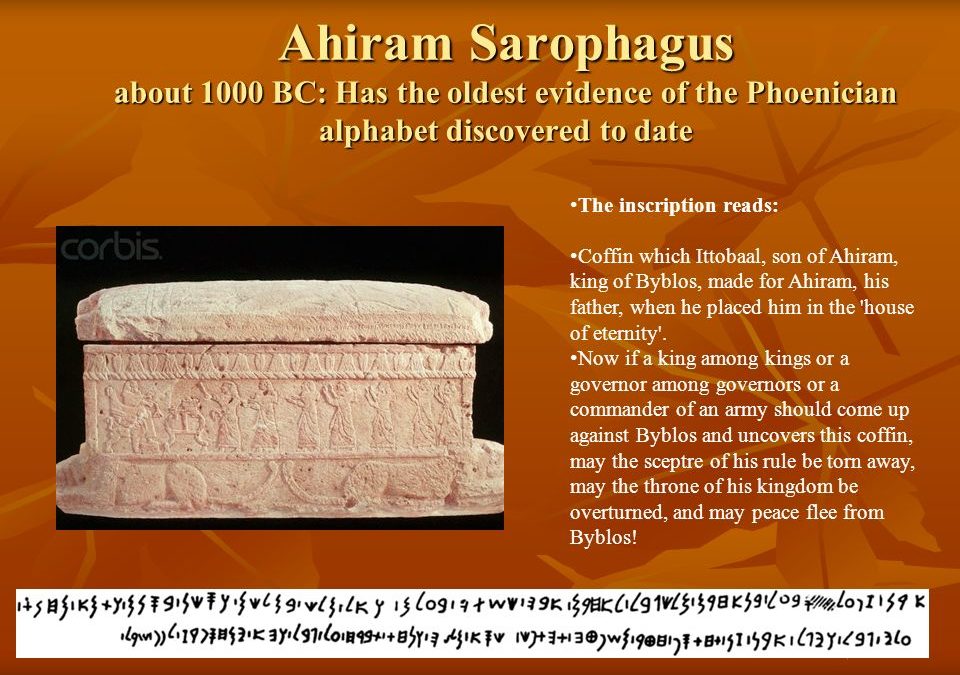
by Moe | Aug 3, 2019 | History of the Brotherhood, Latest Media
In my research into the Biblical Curse of Cain and history of the Masonic fraternity, I found that the oldest writing ever discovered is a curse written on the stone Sarcophagus of the Phoenician King Ahiram. Many biblical scholars and researchers such as myself have suggested a possible connection to who is also known in both Freemasonic and biblical history as King Hiram.
Ahirom, Ahiram, Amram, and Hiram are alternative spellings of the same name.
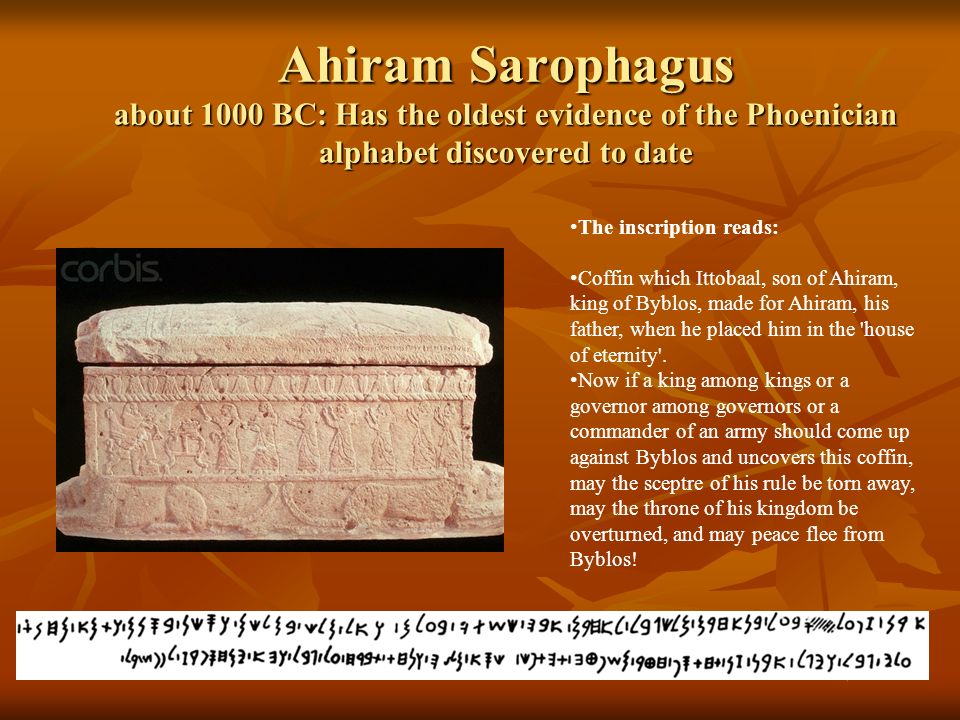
He was a ruler of the ancient city of Byblos (Jubal/ Jubayl / Jbeil) which is the same city where the first writing was discovered and also where the Holy Bible is said to have originated. According to the writer Philo of Byblos (quoting Sanchuniathon, and quoted in Eusebius), Byblos is also considered as the world’s “oldest continuously inhabited city.”
The Greeks had given the name of the lands they ruled as “Phoenicia,” and they called the city “Byblos” by the name “Papyrus” because this city was important in the papyrus trade. The Phoenician city, known to the Greeks as Býblos (Βύβλος) and to the Romans as Byblus, was important for their import of papyrus from Egypt.
The curse is written in ancient Phoenician writing with 22 letters, the same number as the Hebrew which also happens to be the world’s first alphabet. The scribes of Byblos were said to have developed this writing which became the precursor of all modern alphabets of Babel and all languages that are spoken today.
This is very important because not only was the world’s oldest curse discovered but it was also the world’s oldest writing in one of the world’s oldest cities where the bible had originated.
The inscription reads;
“A coffin made it [It]tobaal, son of Ahirom, king of Byblos, for Ahirom, his father, lo, thus he put him in seclusion. Now, if a king among kings and a governor among governors and a commander of an army should come up against Byblos; and when he then uncovers this coffin – (then:) may strip off the scepter of his judiciary, may be overturned the throne of his kingdom, and peace and quiet may flee from Byblos.
And as for him, one should cancel his registration concerning the libation tube of the memorial sacrifice.”
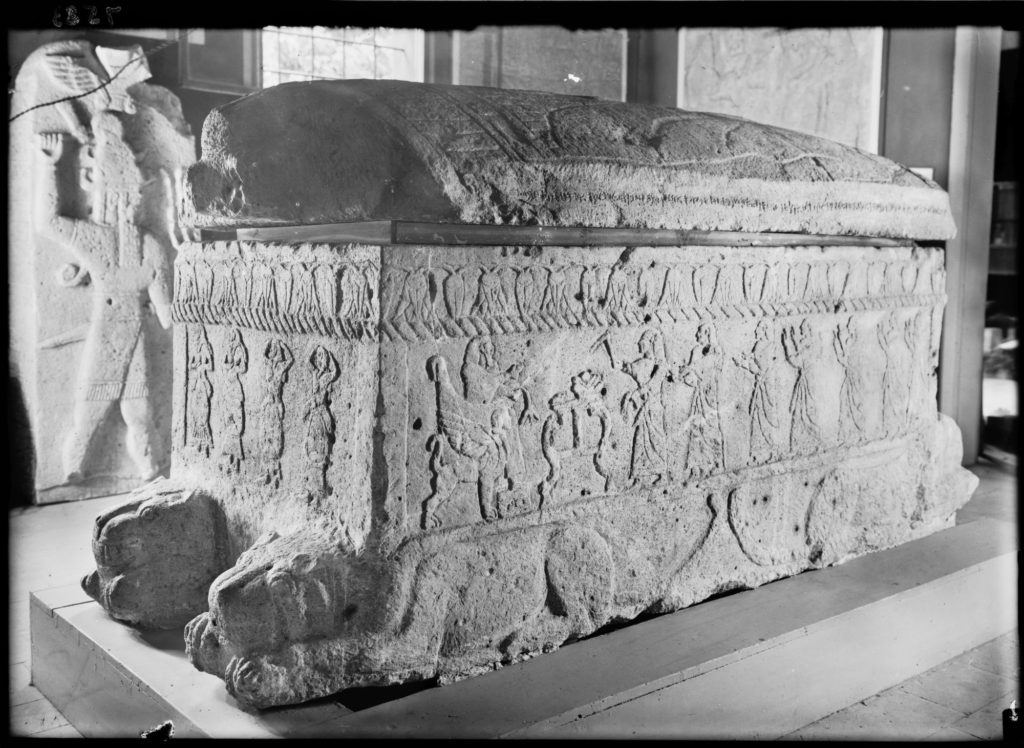
Another interesting Freemasonic fact is that the first priest offering tribute to the King appears to be holding a Masonic Square in his right hand. They also look very similar to the Egyptian priesthood proving further connections to Egypt which I have written about many times before.
The Sarcophagus of Ahiram was discovered in 1923 during an excavation in Byblos, which was led by the French archaeologist Pierre Montet. A total of nine tombs belonging to the Phoenician kings were discovered at Byblos.
Hiram’s tomb was discovered after it became exposed from heavy rains that caused the collapse of parts of a hill. The tombs were cut directly into the rock, and it was in tomb V that his sarcophagus, which is made of limestone, was found.
In my many previous articles, I have put forth research showing that Ahiram is also known biblically and Masonically as King Hiram who was the Phoenician King of Tyre on the Holy Island of Crete during the reigns of Egyptian Kings, David and Solomon who I have also connected to Ramesses II and III.
Physical evidence of these facts was found in Ahiram’s tomb when during the excavation some objects bearing the cartouche of Ramesses II (XIII century), were discovered in the burial chamber next to the sarcophagus.
It is said that King Ahiram was succeeded by his son Ithobaal I (Latin Ithobalus, Hebrew Ethbaal) (reigned 591–573 BCE) who is the first to be explicitly entitled King of Byblos. From the inscriptions on the lid of the sarcophagus, it seems clear that the one in charge of the ceremony was the king’s son.
This king is said by religious scholars to be identified with specifically Ithobaal III who according to the list of kings of Tyre of Josephus was reigning contemporary with Ezekiel at the time of the first fall of Jerusalem.
He was said to the father of the Jezebel and is mentioned in the First Book of Kings as the king of Sidonians.
Today, the Sarcophagus of King Ahiram is kept in the National Museum of Beirut in Lebanon.

















































